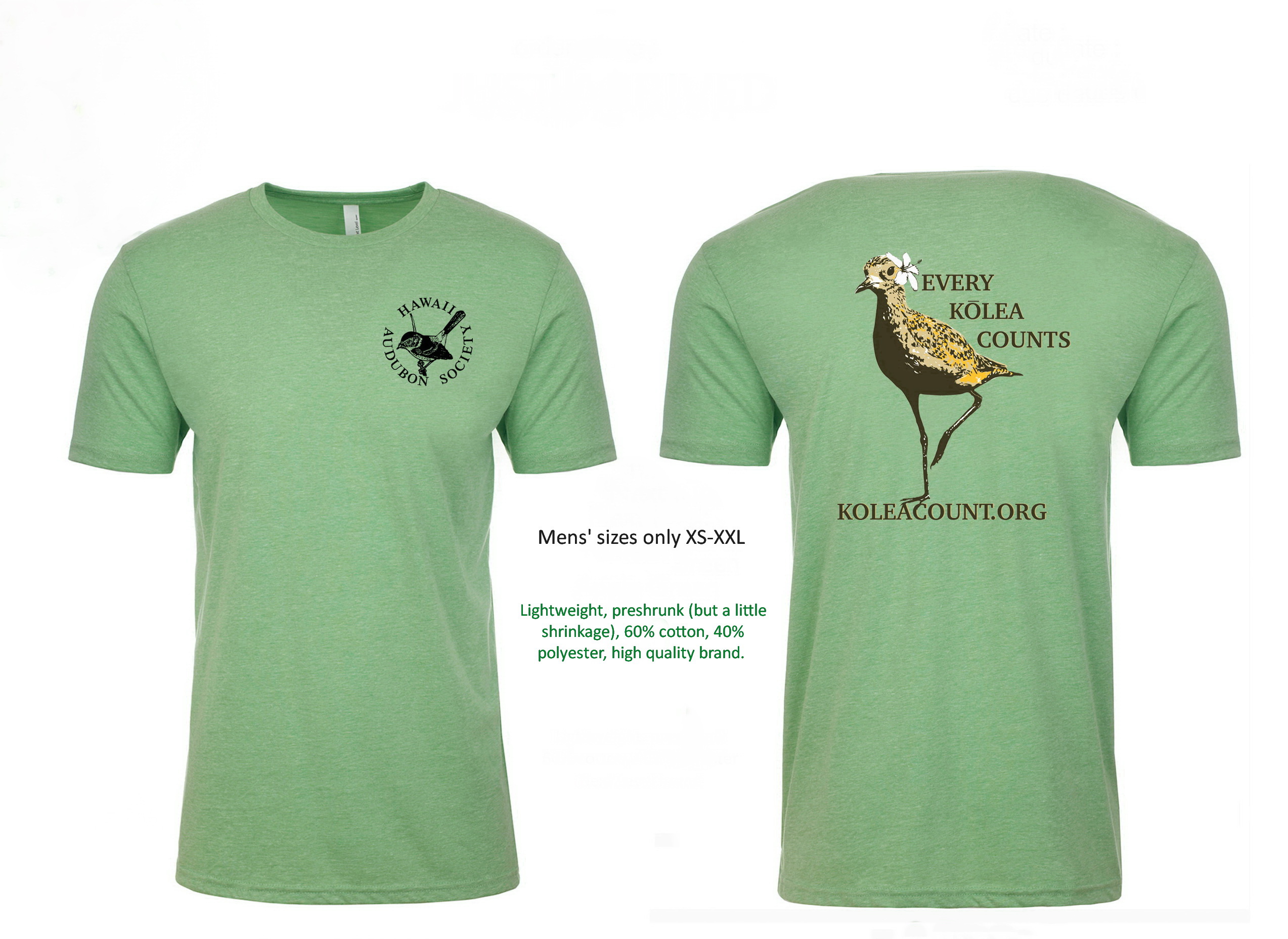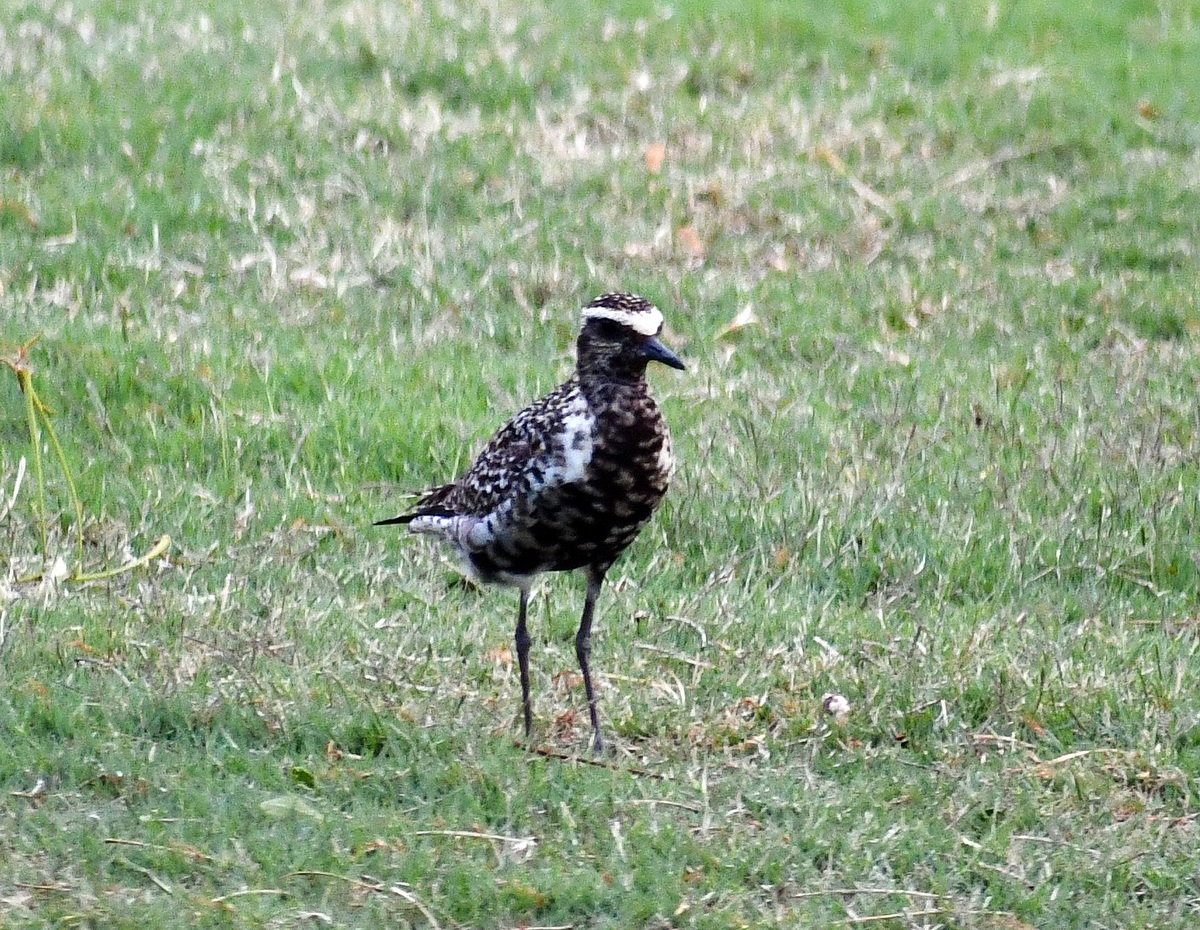Plover lovers make Kolea Count an annual affair
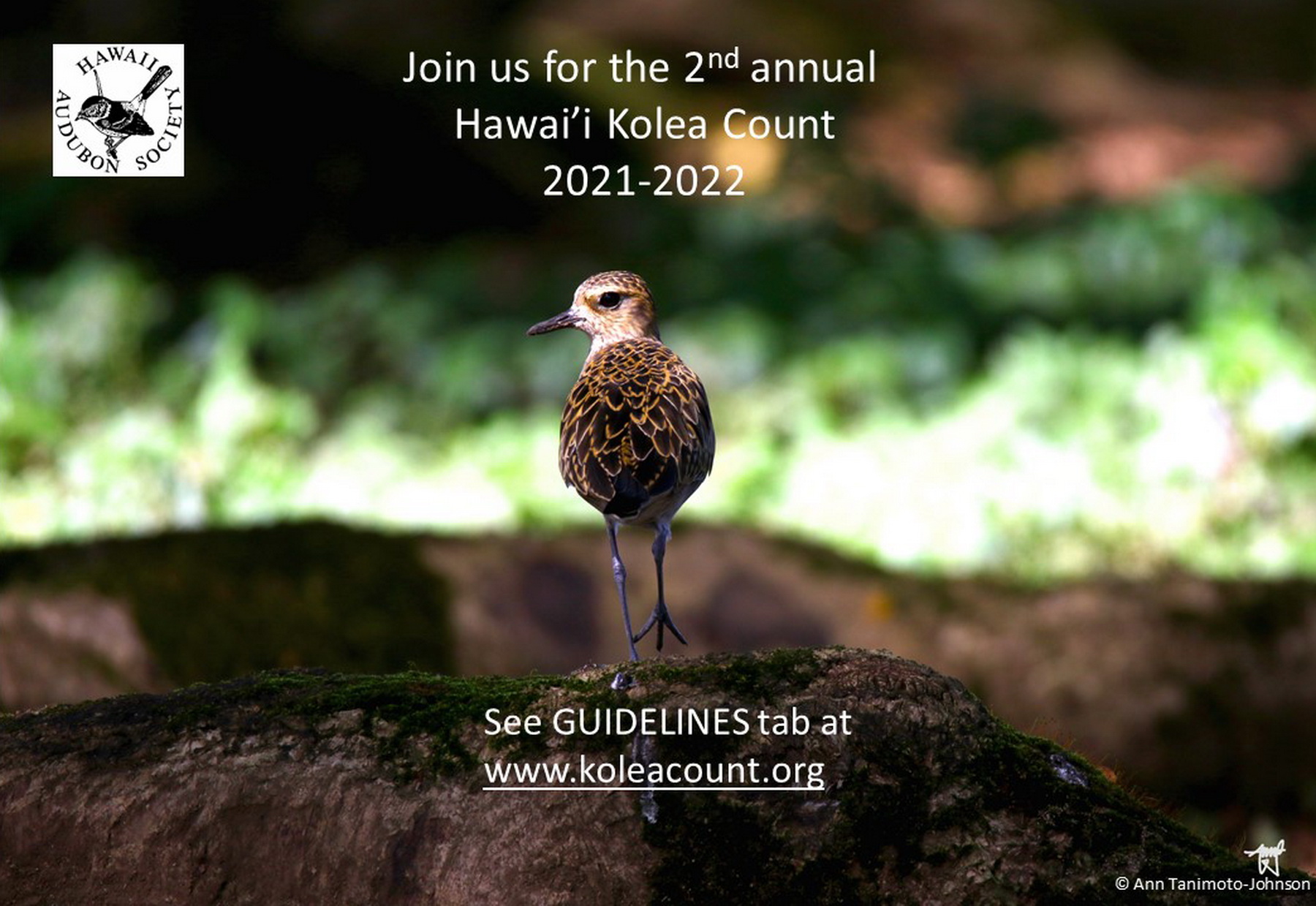
The Kolea are coming home. Plover fans have reported a total of 14 birds so far in July. I say home because these migratory shorebirds spend only three or so months of the year in their Alaska breeding grounds, and the other nine in Hawaii.
Lucky us. Nowhere else in the world do migratory shorebirds live in harmony with humans the way our Kolea have learned to do here in our islands. And now, thanks to hundreds of Hawaii’s devoted plover lovers, our 2020 idea of asking residents and visitors to count and monitor Kolea was so successful that we’re continuing the count long-term.
You can help these remarkable shorebirds by participating in the now-annual Hawaii Audubon Society project here at www.koleacount.org
Check out the new REPORT choices. Record arrival, departure, a backyard bird (Little Count), or any other plover doings you would like to share. Sign up for Big Counts at the read-only site: http://bit.ly/2BFwVXG and see Guidelines tab for count particulars. Let me, Susan Scott, know in the CONTACT tab the area you can count. I will mark it as TAKEN, and keep my master list of names and emails private.
Thank you for helping fine tune the Big Count list by letting me know places where Kolea hang out that are not on the list, or places on the list that never have Kolea.
2020 pilot study results, in brief:
- 611: number of people who entered reports
- 4,196: number of bird observations reported
- 167: Number of Kolea with given names (Sir Lancelot, Bob, etc.)
- Oahu: Island with most entries
- 40: number of Kolea reported in June, or birds that did not migrate (summered-over)
2020 pilot study results in detail:
Below are graphs of counts by months, islands, zip codes and more. * Special thanks to volunteer, Dr. Brad Schultz, for organizing the spreadsheet into such a comprehensive and attractive analysis, and for counting hundreds of Kolea while visiting Oahu.
Total number of birds reported:
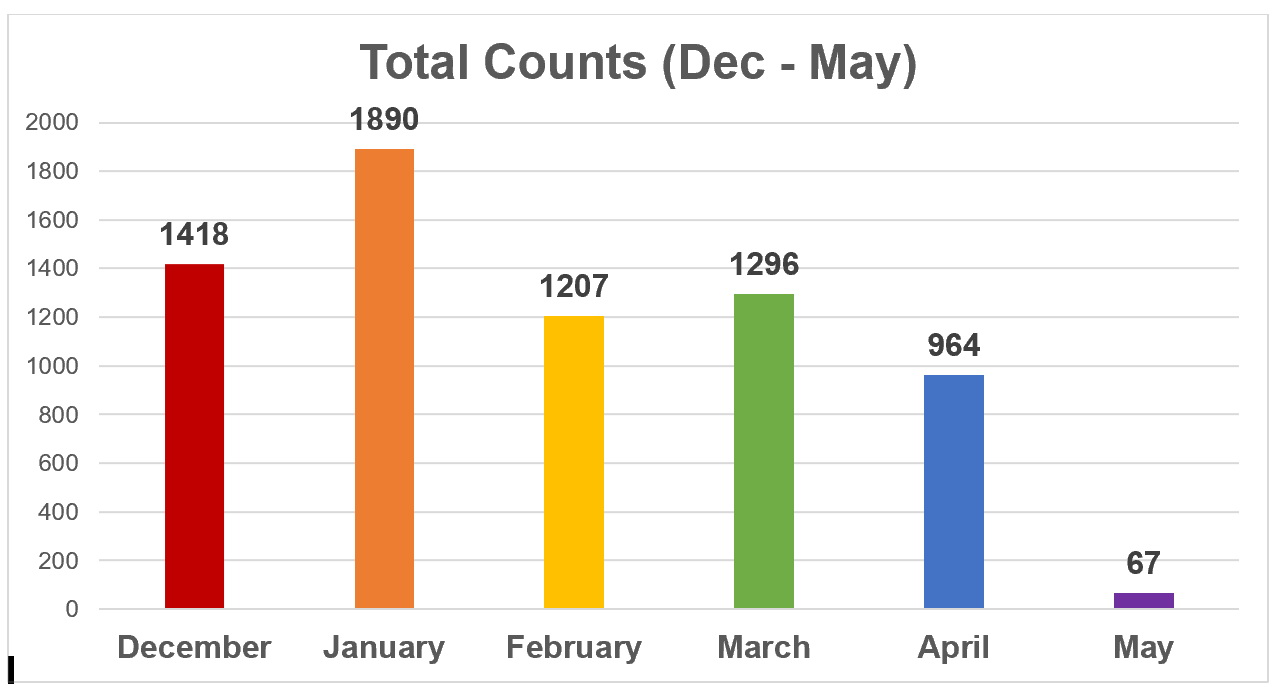
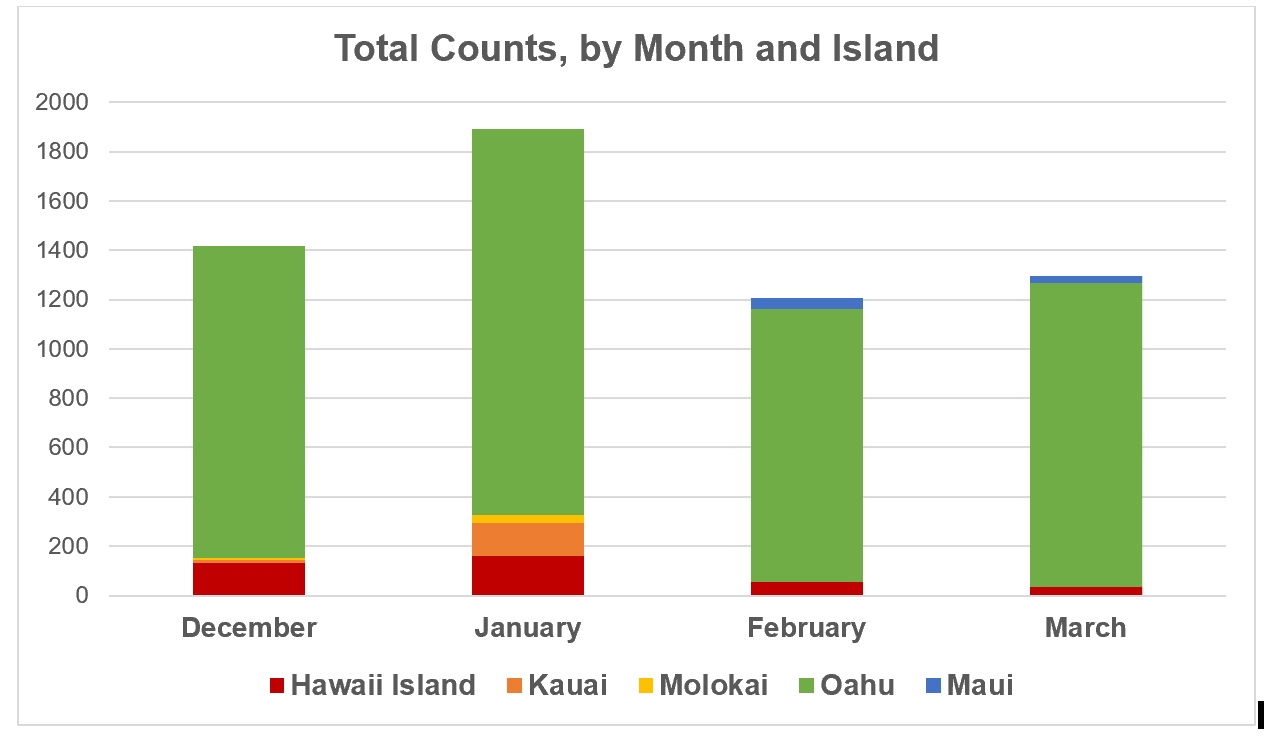
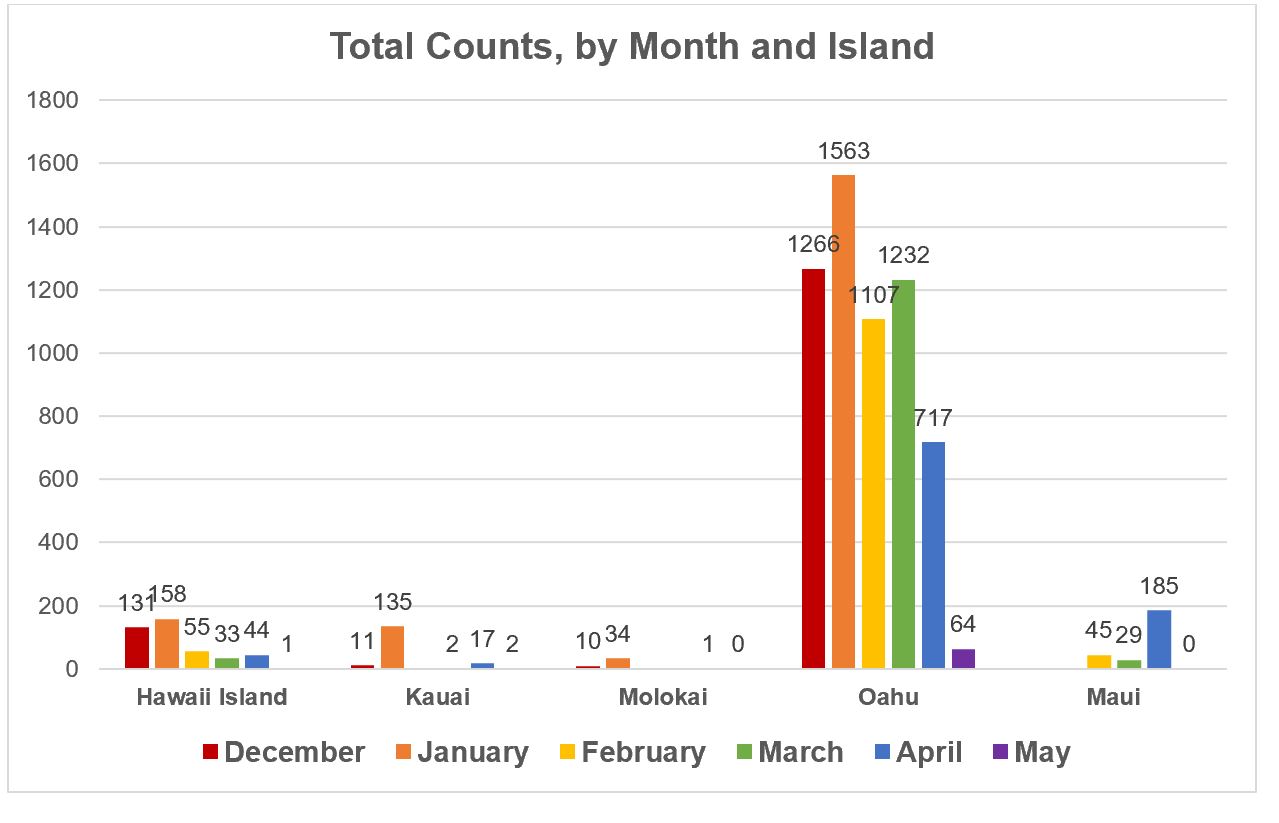
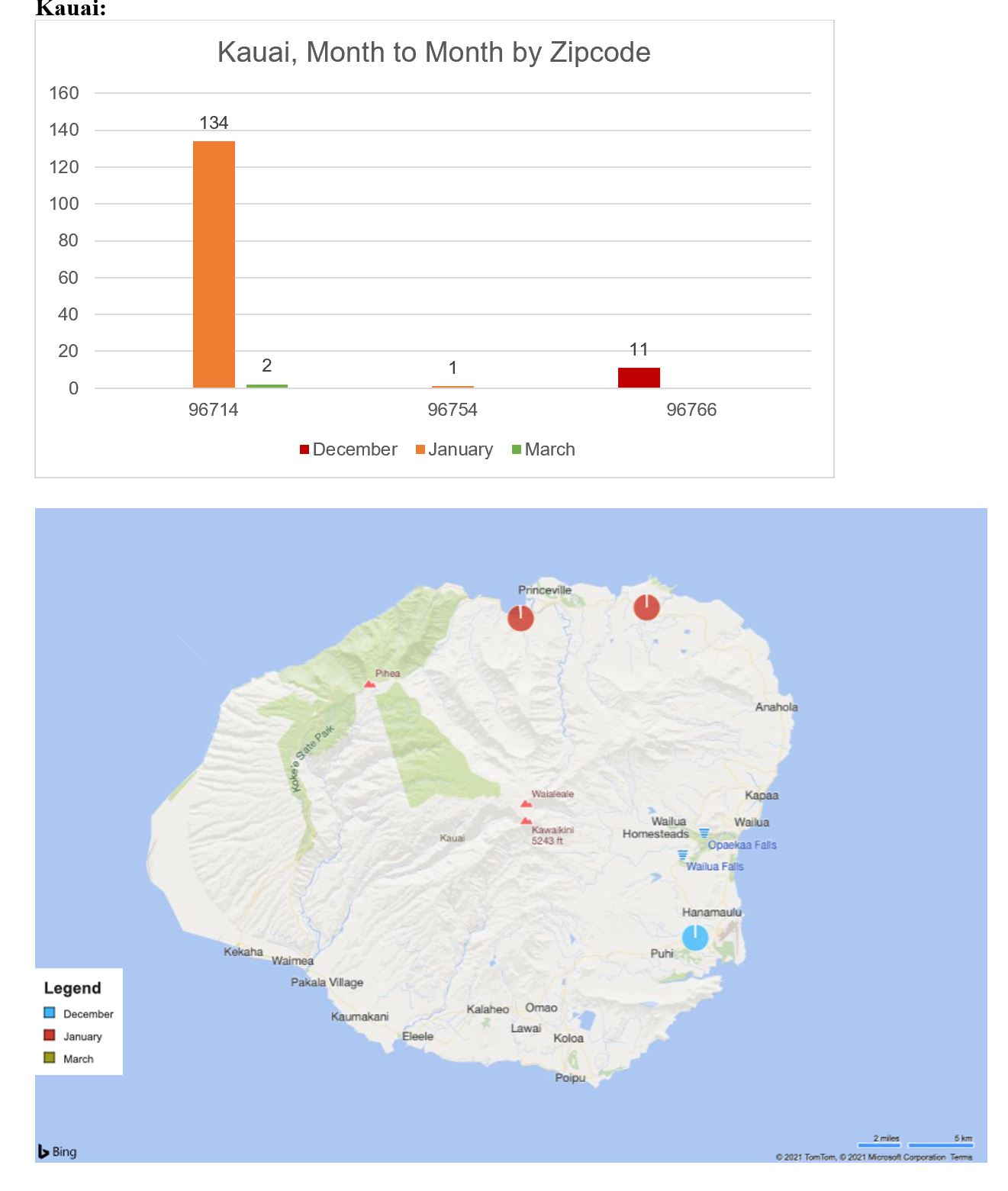
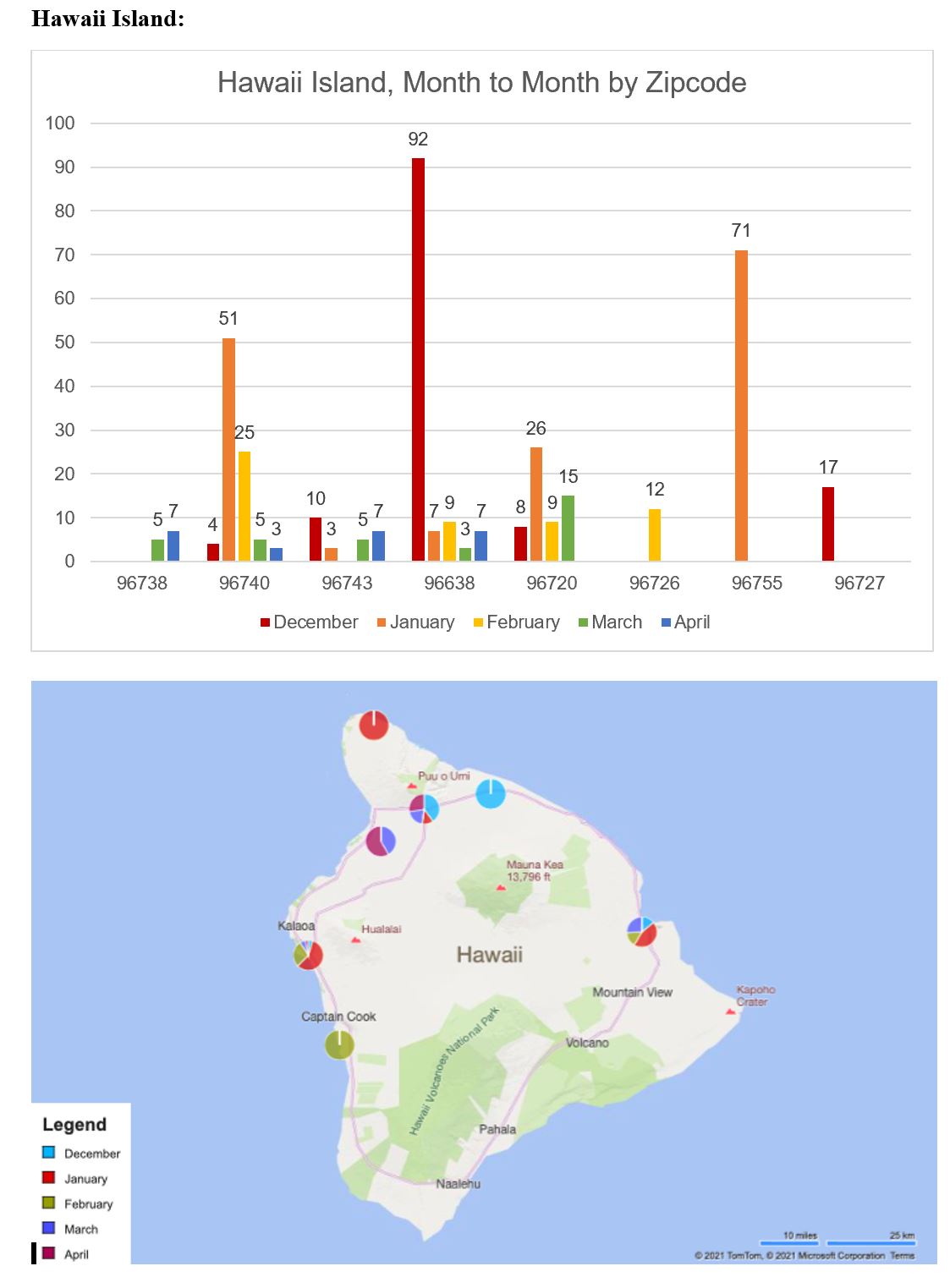
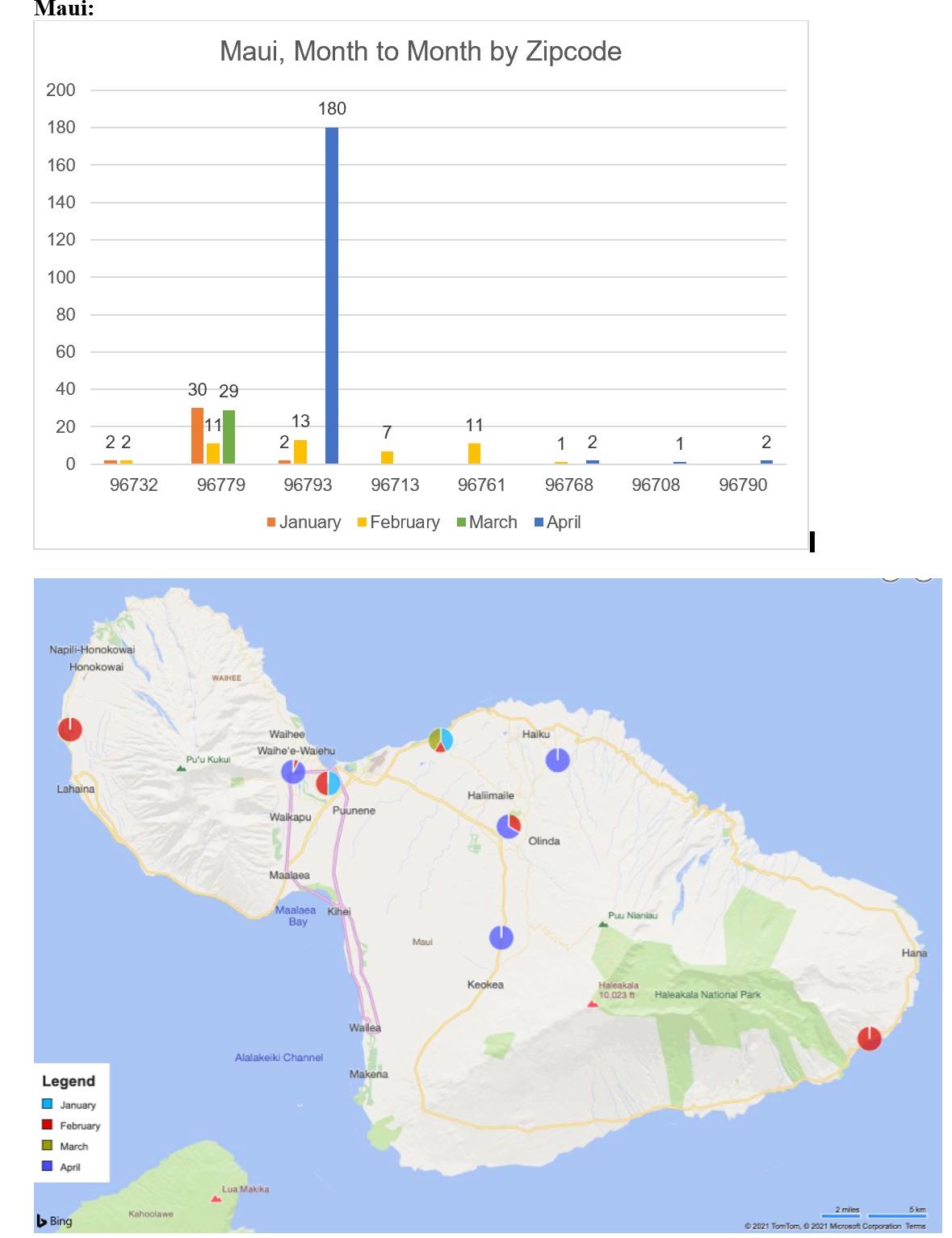
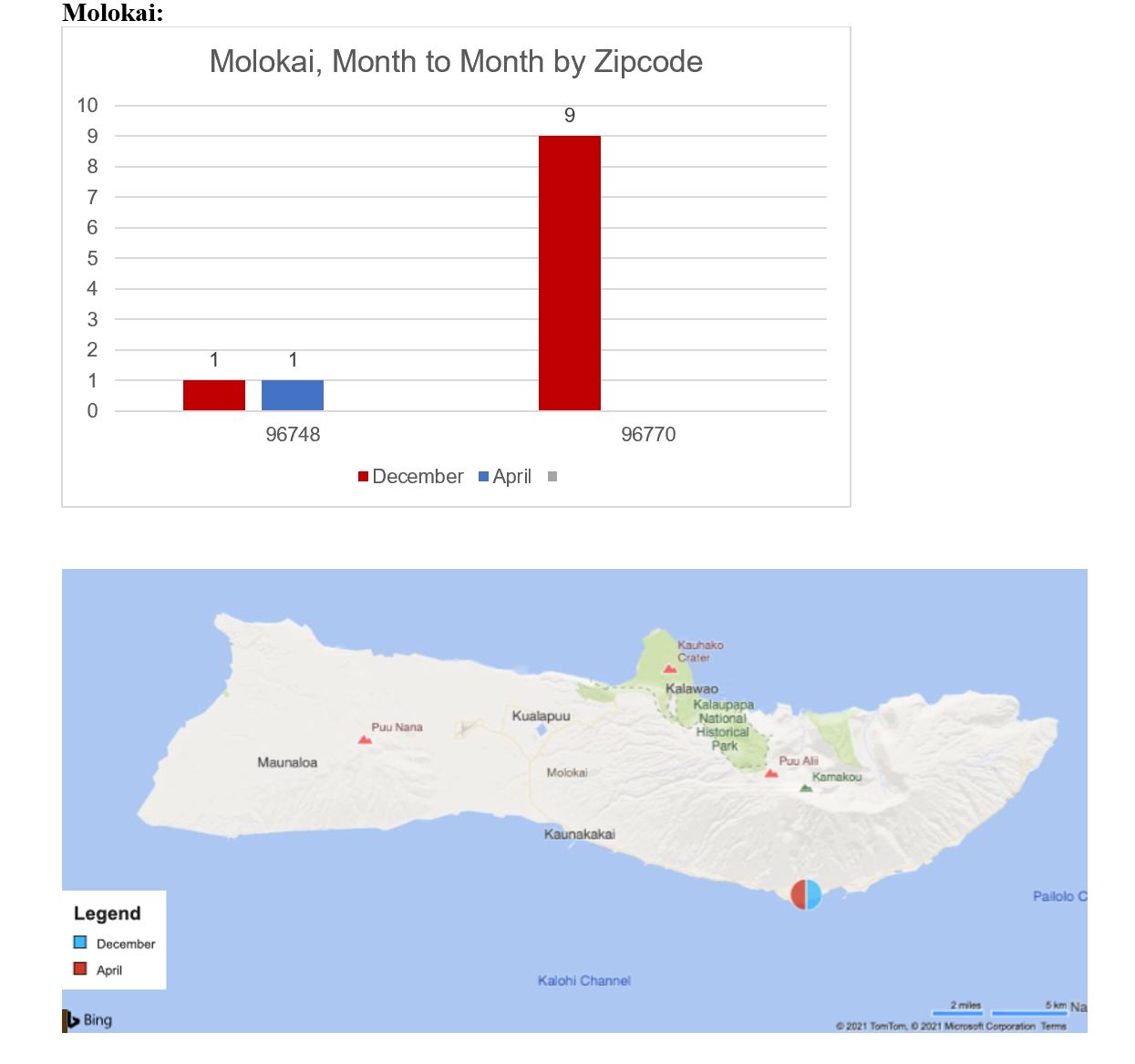
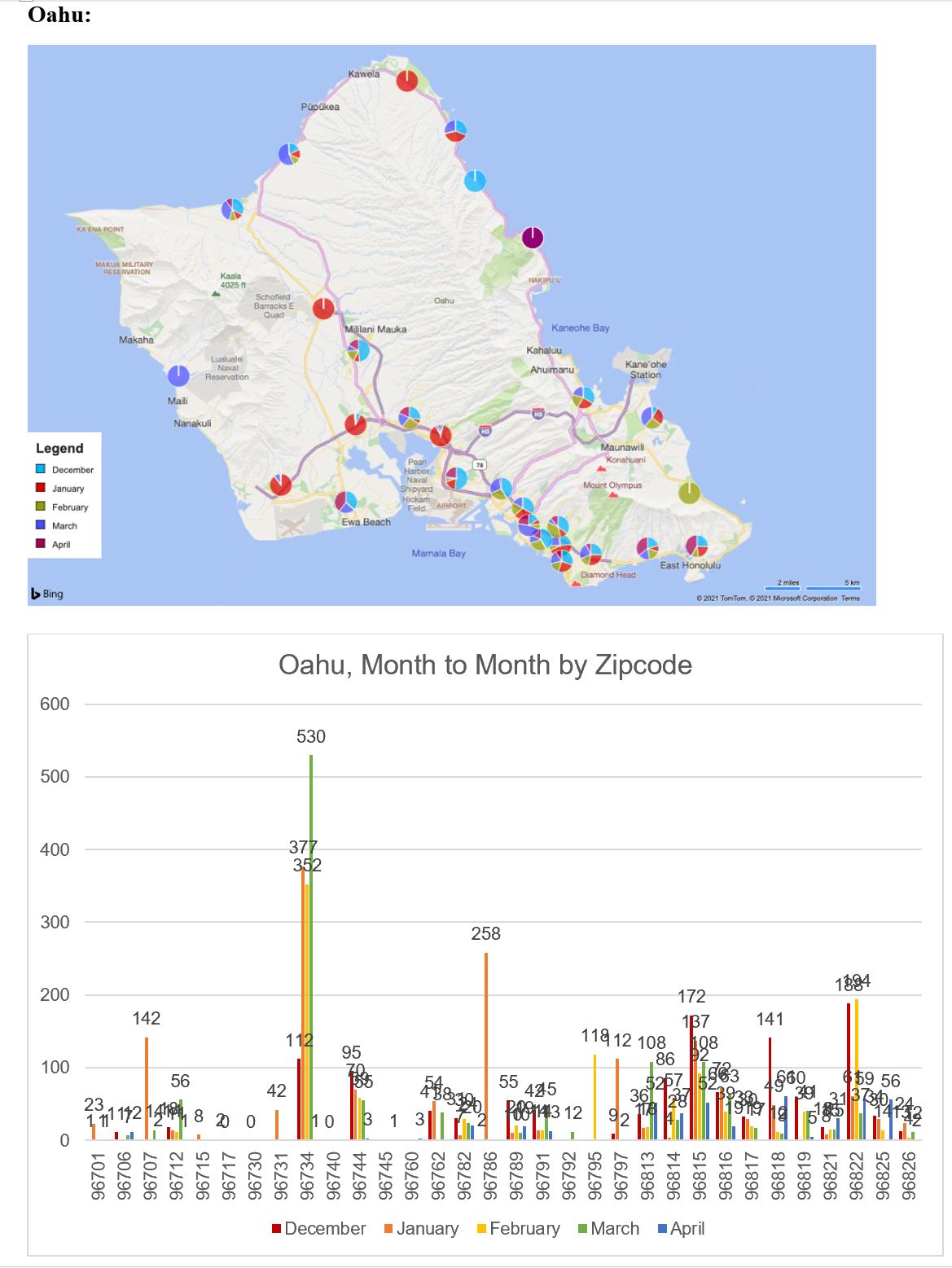
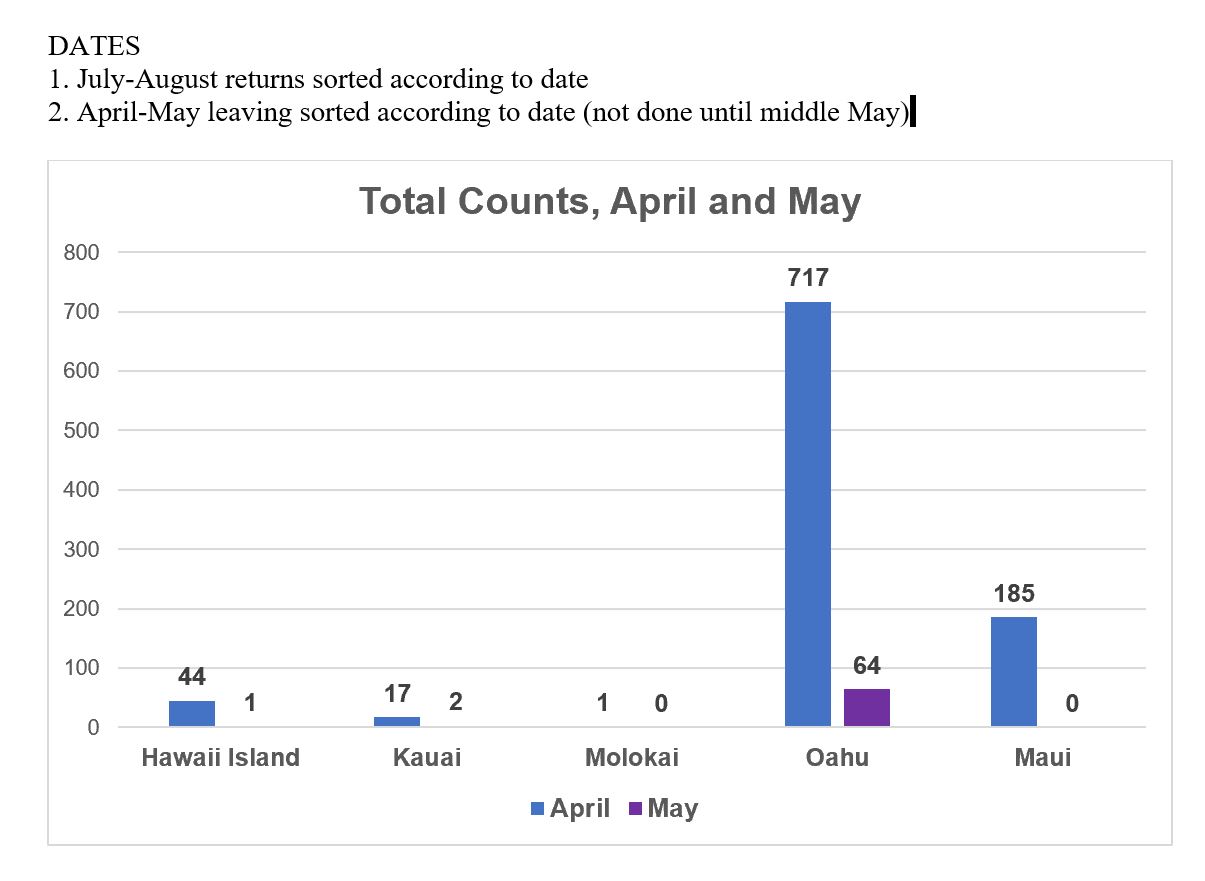
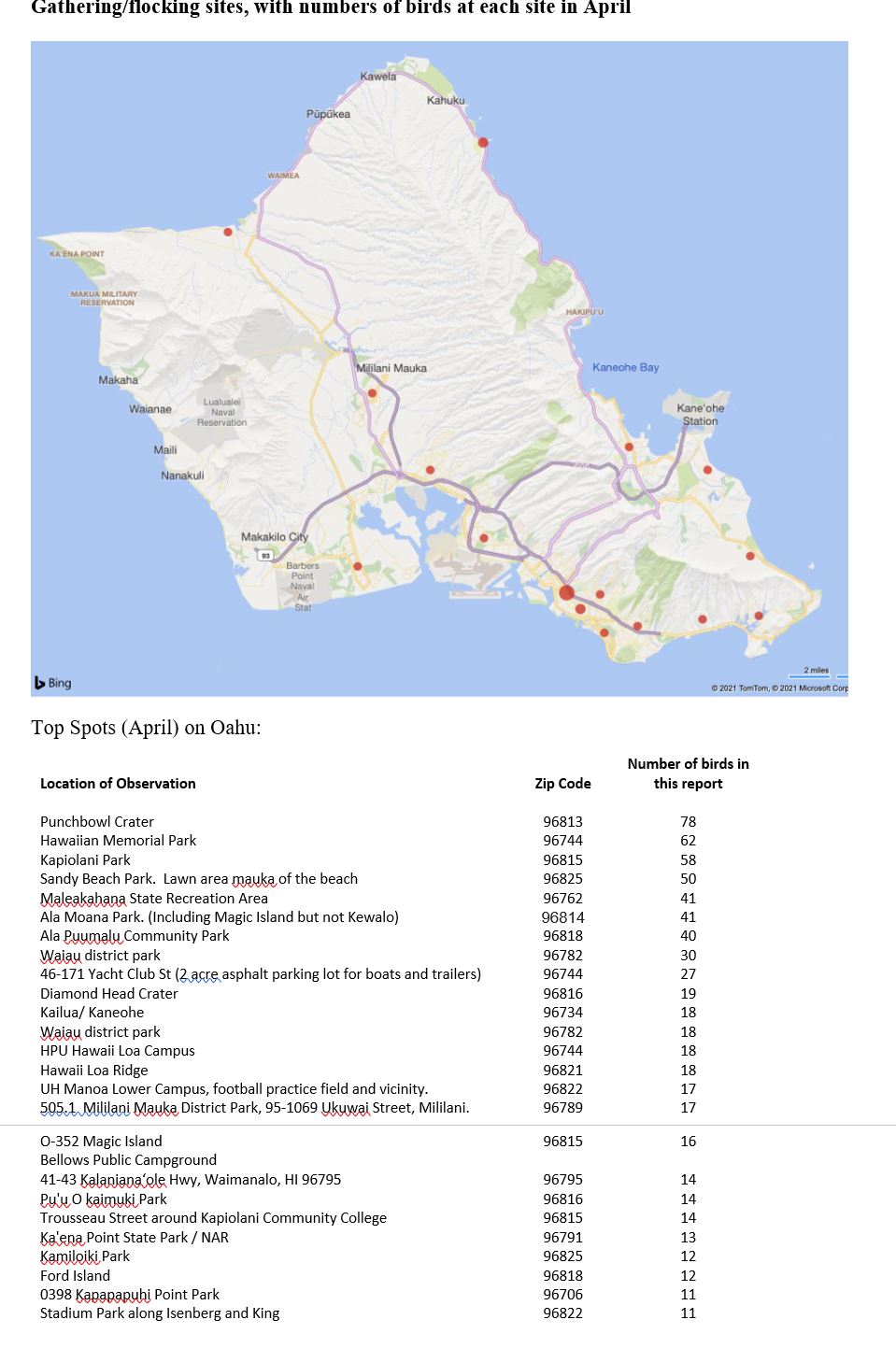
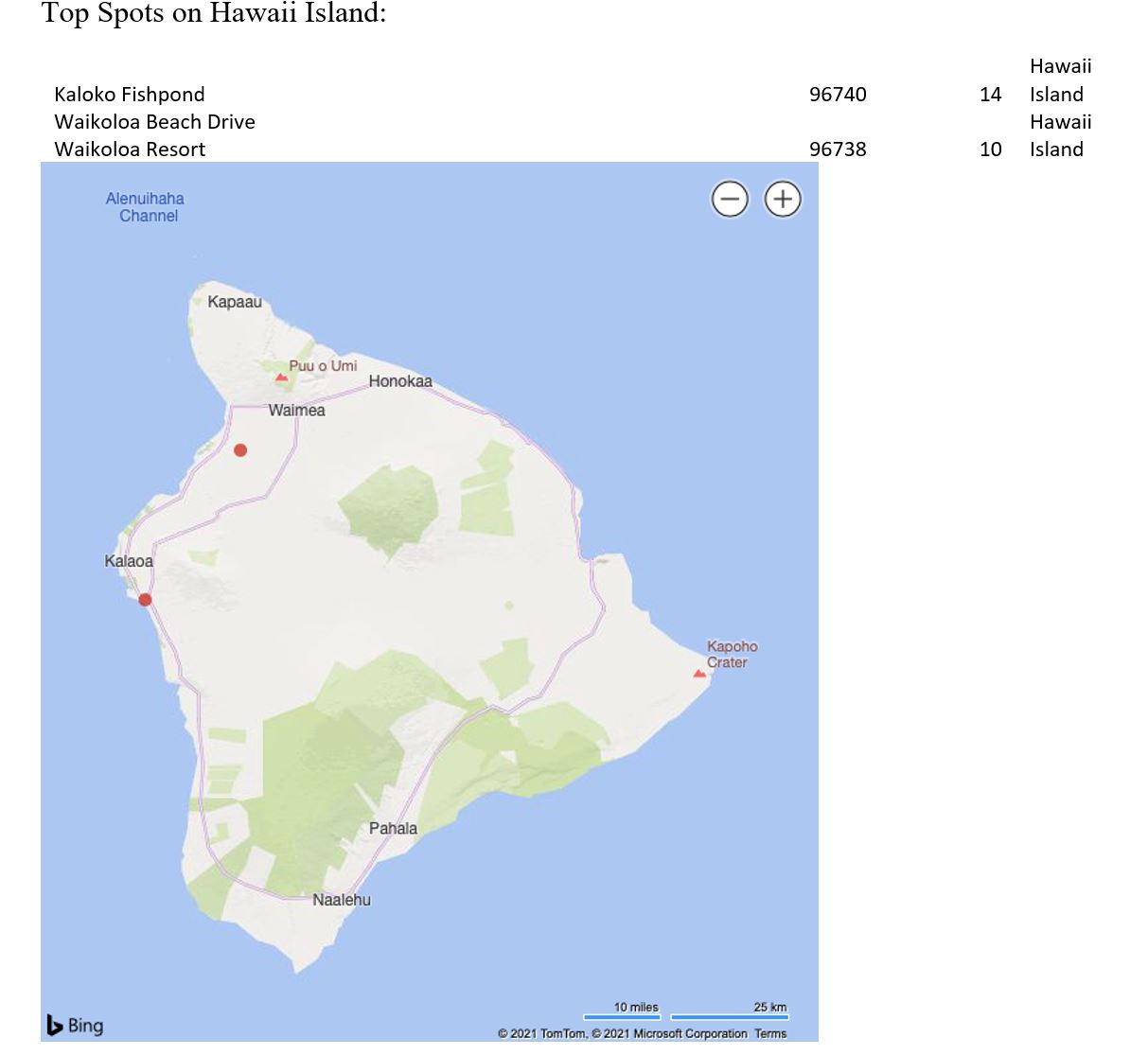
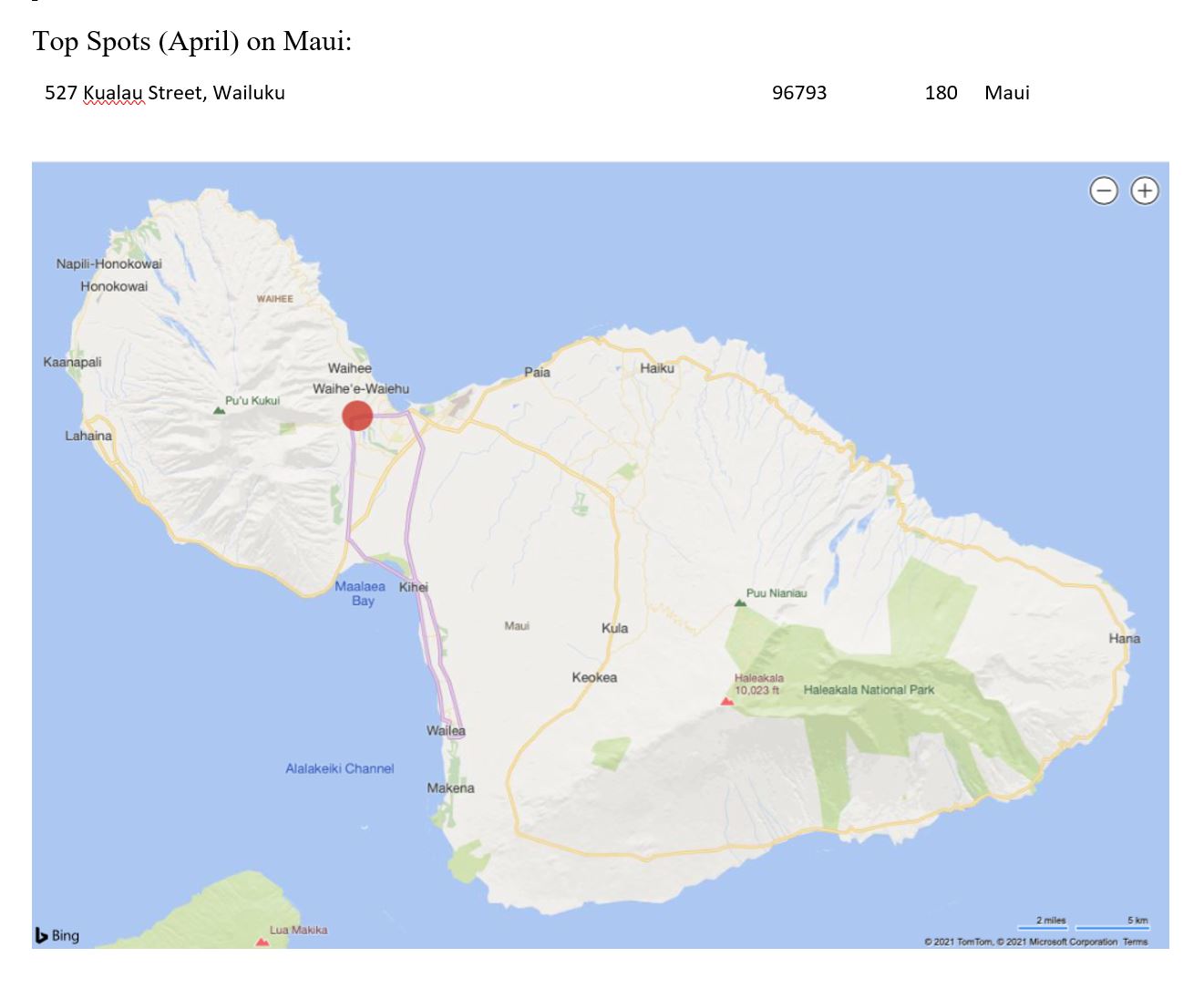
End
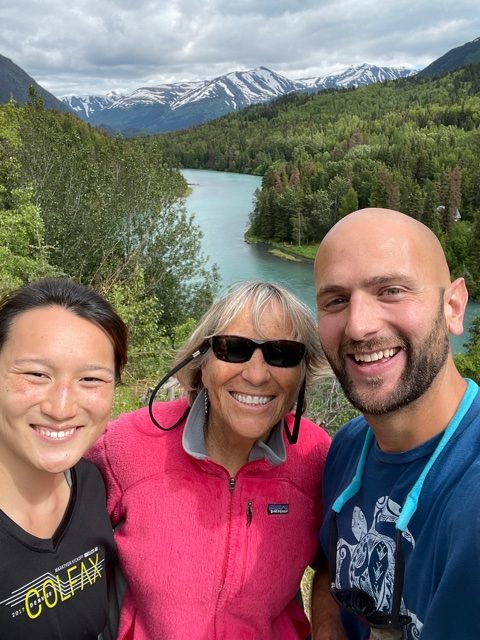
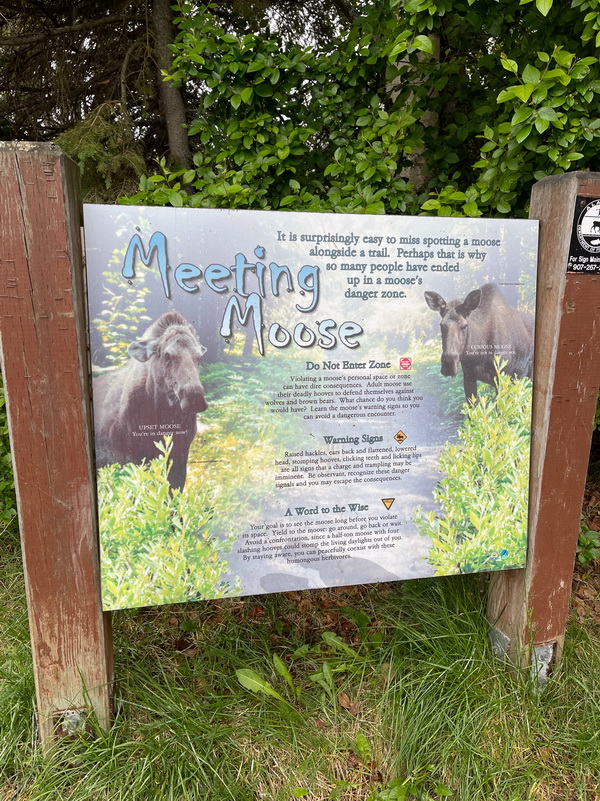 Signs on Anchorage’s Tony Knowles Coastal Trail explain how to behave when confronted by a moose. I thought such an encounter unlikely. I was wrong. ©Susan Scott
Signs on Anchorage’s Tony Knowles Coastal Trail explain how to behave when confronted by a moose. I thought such an encounter unlikely. I was wrong. ©Susan Scott 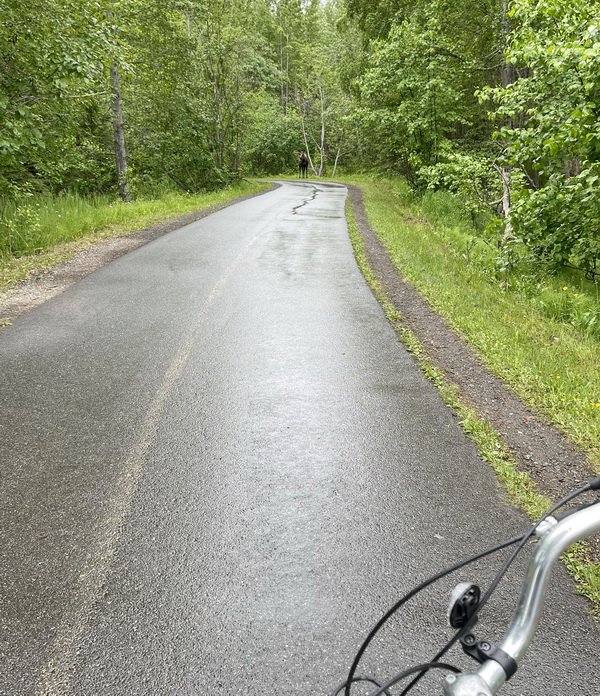 A moose on the trail brought me, on my rented bike, to a screeching halt. ©Susan Scott
A moose on the trail brought me, on my rented bike, to a screeching halt. ©Susan Scott 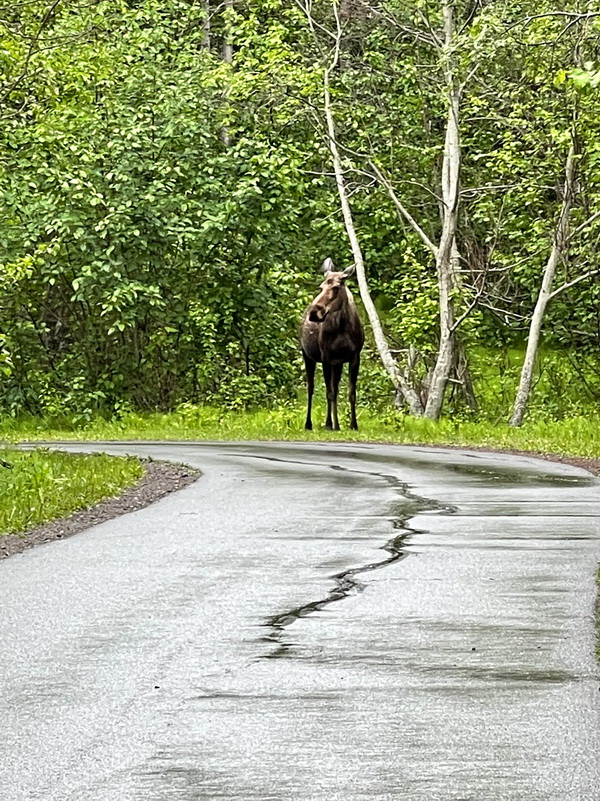 I waited until the moose lost interest in me and ambled off into the woods that border urban Anchorage. ©Susan Scott
I waited until the moose lost interest in me and ambled off into the woods that border urban Anchorage. ©Susan Scott 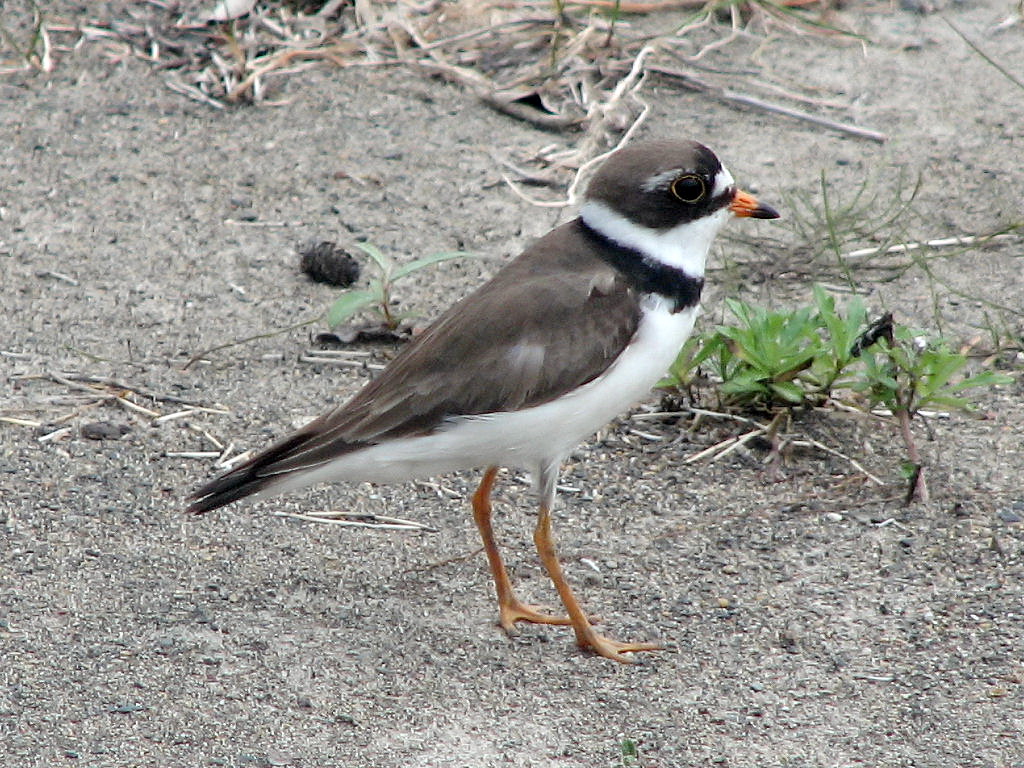 A clear picture of a semipalmated plover. D. Gordon E. Robertson photo, Creative Commons, Wikipedia.
A clear picture of a semipalmated plover. D. Gordon E. Robertson photo, Creative Commons, Wikipedia. 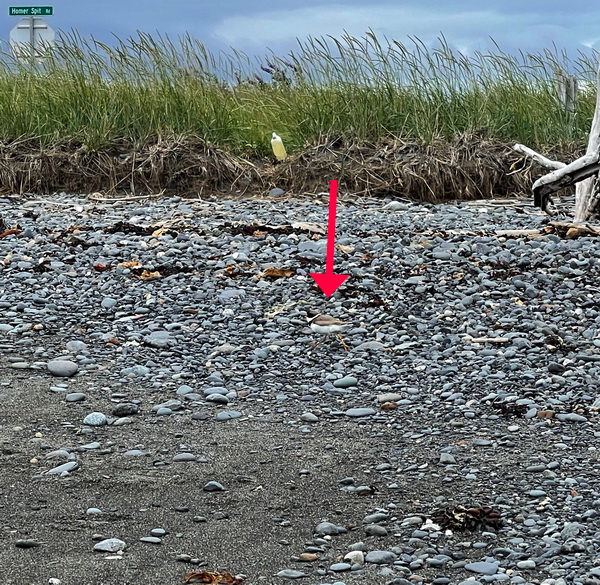 My first sighting of a semipalmated plover. This is just feet off the Homer Spit road (sign top left.) ©Susan Scott
My first sighting of a semipalmated plover. This is just feet off the Homer Spit road (sign top left.) ©Susan Scott 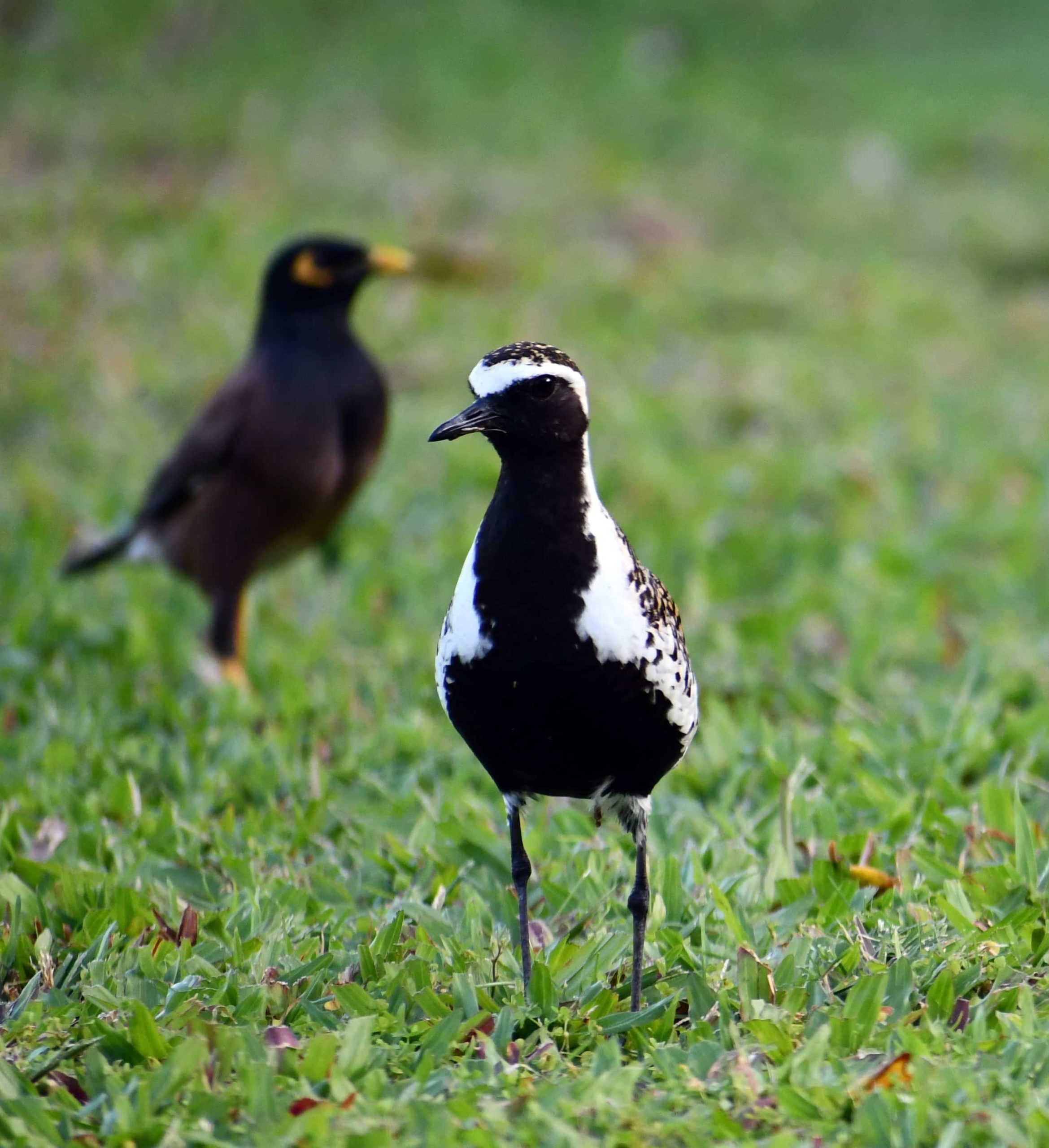
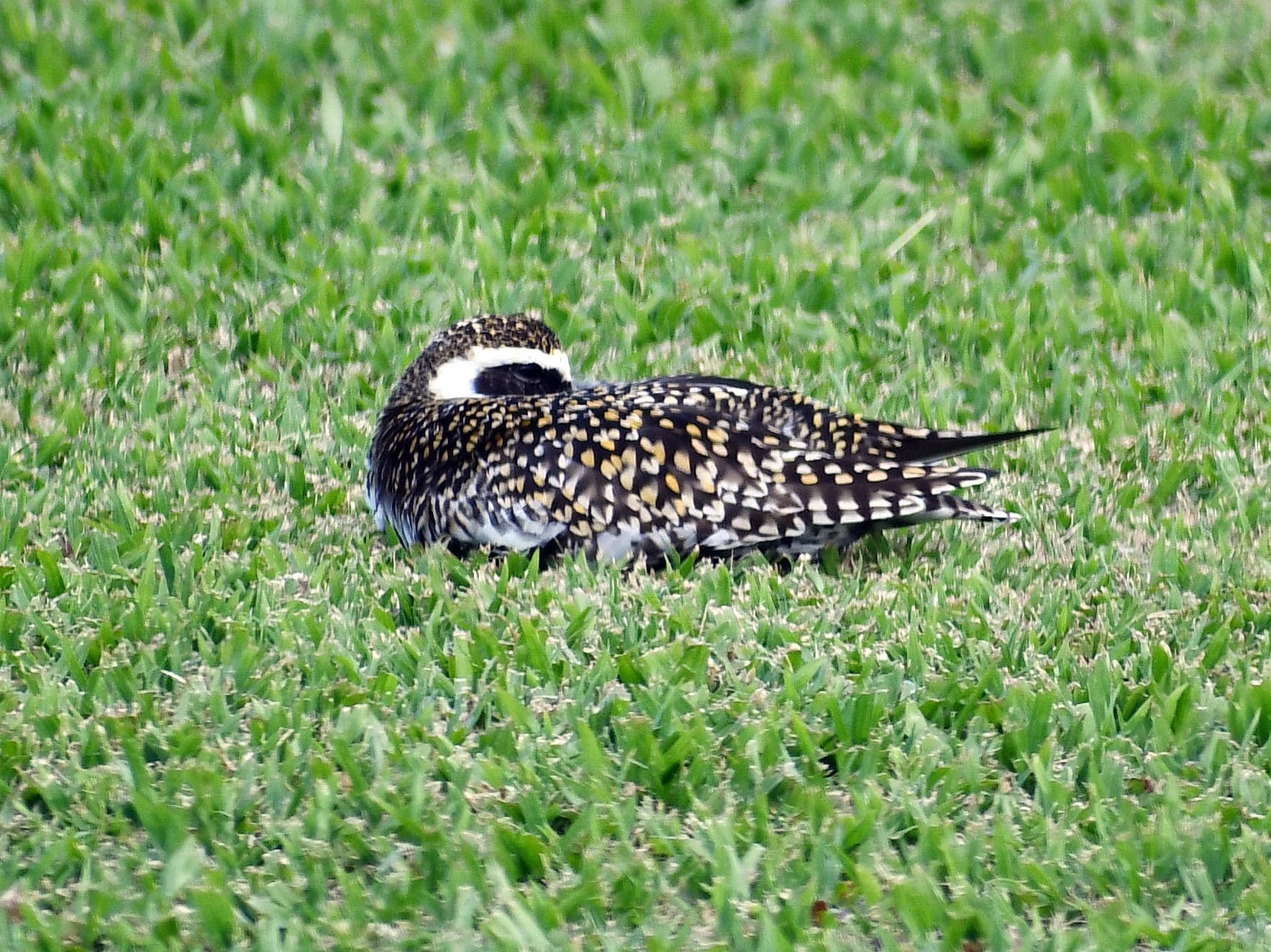 Resting up for the big trip. BYUH campus. ©Susan Scott
Resting up for the big trip. BYUH campus. ©Susan Scott 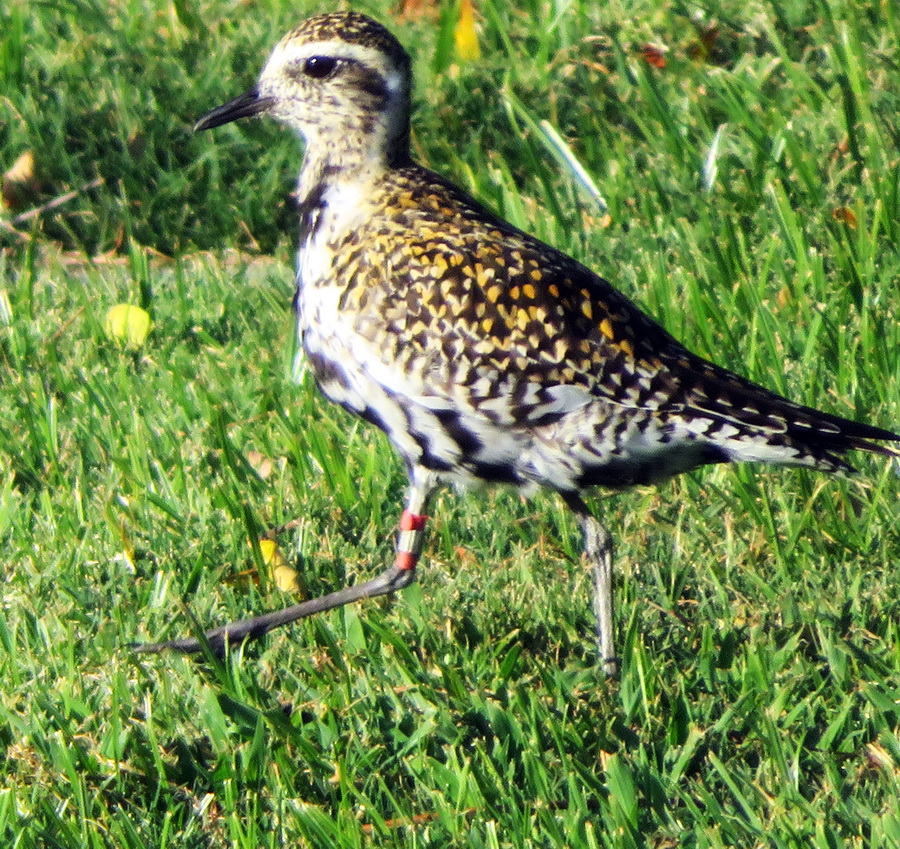
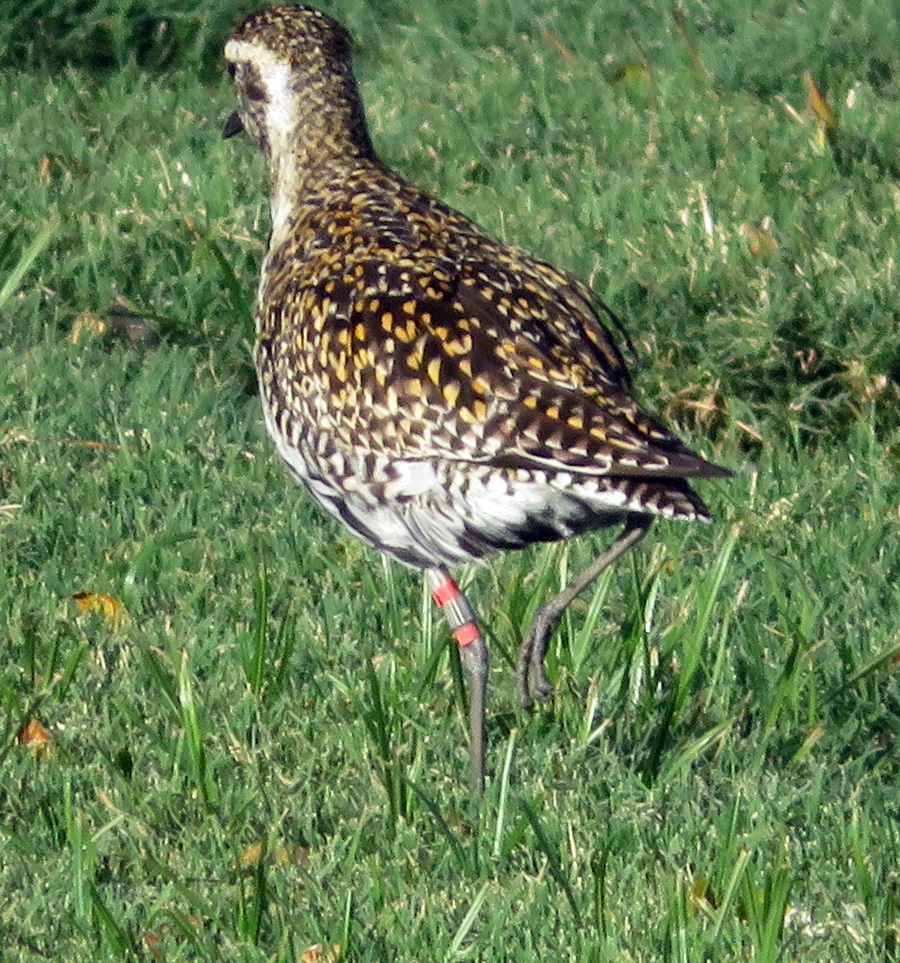 Sig’s discovery is excioting news. The last time Wally Johnson banded Kolea in Punchbowl was over 18 years ago, making this individual a minimum of 18 years, 6 months old. The bird might be older. Wally didn’t know the bird’s age when he placed the bands on its leg. Sigrid Southworth photo
Sig’s discovery is excioting news. The last time Wally Johnson banded Kolea in Punchbowl was over 18 years ago, making this individual a minimum of 18 years, 6 months old. The bird might be older. Wally didn’t know the bird’s age when he placed the bands on its leg. Sigrid Southworth photo 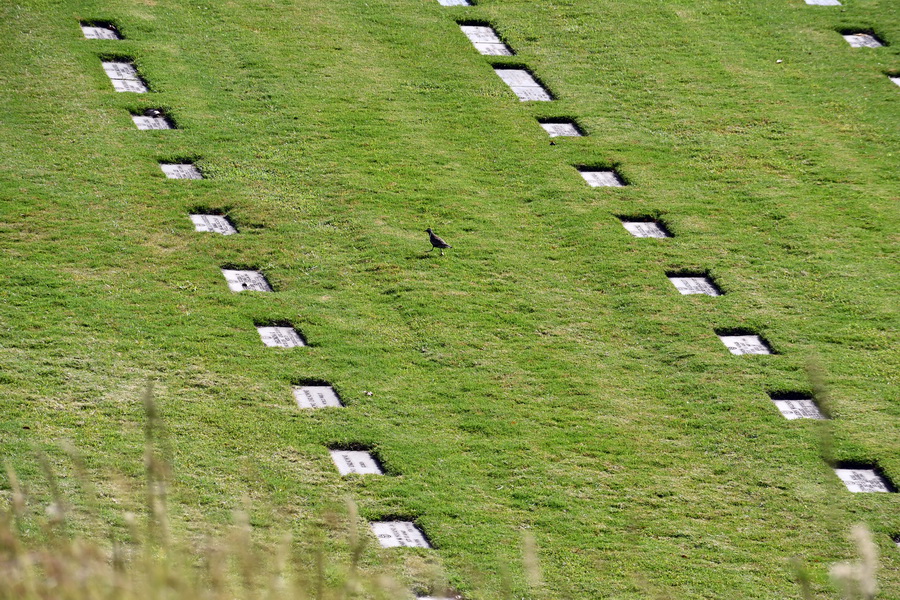 Heads-up: If you go to the National Memorial Cemetery of the Pacific (Punchbowl), an excellent place to watch plovers, rules of respect are enforced. I have been warned twice by security guards that neither walking (meaning strolling about) nor bird watching not allowed. Visiting graves or memorials, however, is fine. Now when I’m there, and they ask, I am “visiting.” Susan Scott photo.
Heads-up: If you go to the National Memorial Cemetery of the Pacific (Punchbowl), an excellent place to watch plovers, rules of respect are enforced. I have been warned twice by security guards that neither walking (meaning strolling about) nor bird watching not allowed. Visiting graves or memorials, however, is fine. Now when I’m there, and they ask, I am “visiting.” Susan Scott photo. 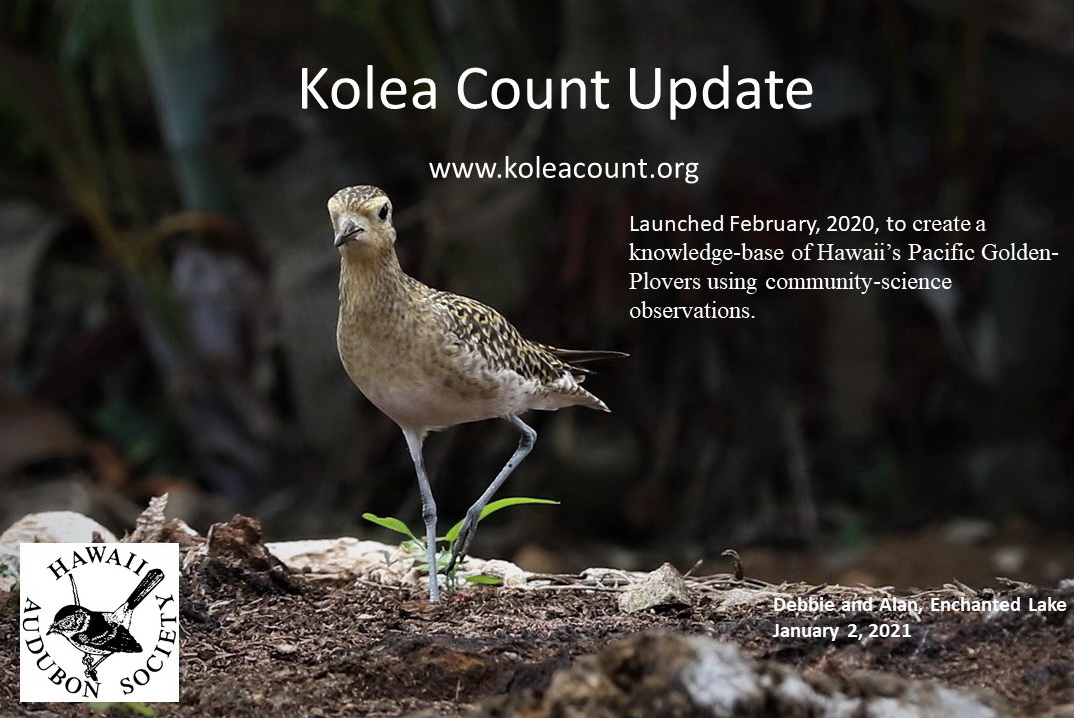 My update on the Kolea Count is Thursday, April 1st at 6:30 via live Zoom. Register to join me.
My update on the Kolea Count is Thursday, April 1st at 6:30 via live Zoom. Register to join me. 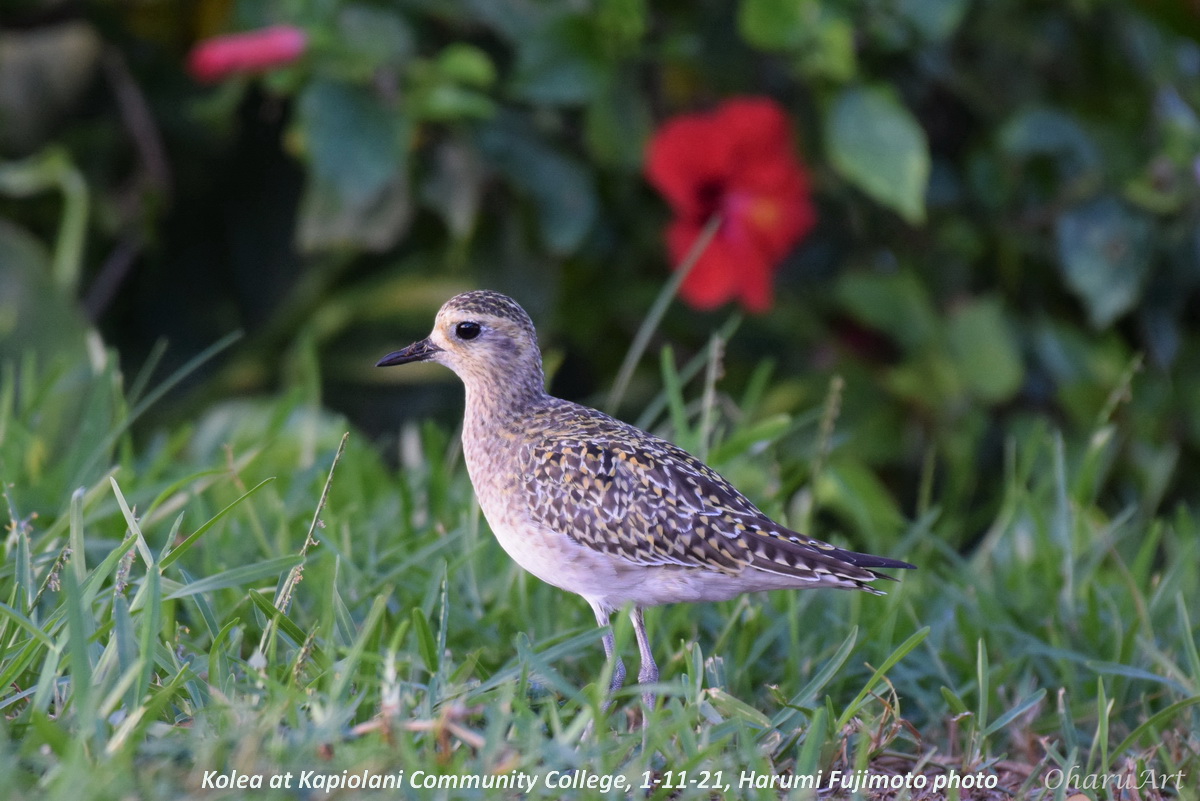
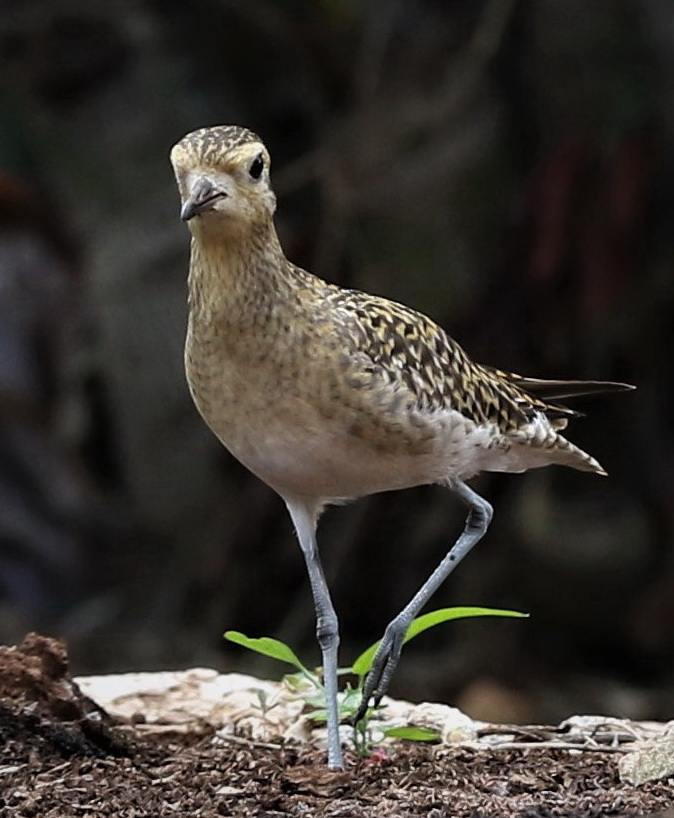 This plover, named “Newbie,” arrived in Debbie and Alan’s Enchanted Lake yard January 2, 2021, as if a gift for the new year.
This plover, named “Newbie,” arrived in Debbie and Alan’s Enchanted Lake yard January 2, 2021, as if a gift for the new year. 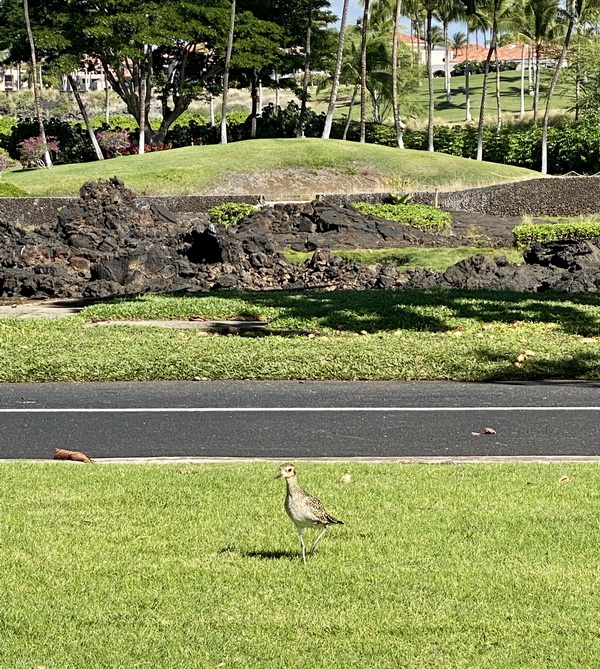 Waikoloa Beach Drive, February 2. Photo courtesy Toni McDaniel.
Waikoloa Beach Drive, February 2. Photo courtesy Toni McDaniel. 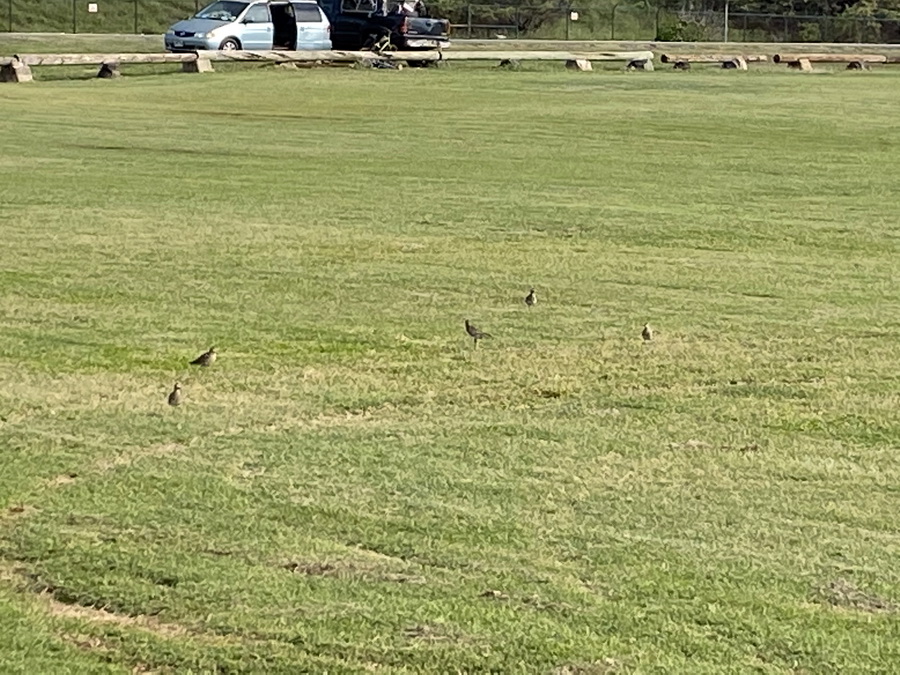 From Michael Feeley, February 6: “Grass field at Sandy Beach. Rare to see 5 together. Occasionally one would get irritated, but they mostly were peaceful for about 5 minutes. They flew off together when a kite flyer came by.”
From Michael Feeley, February 6: “Grass field at Sandy Beach. Rare to see 5 together. Occasionally one would get irritated, but they mostly were peaceful for about 5 minutes. They flew off together when a kite flyer came by.” 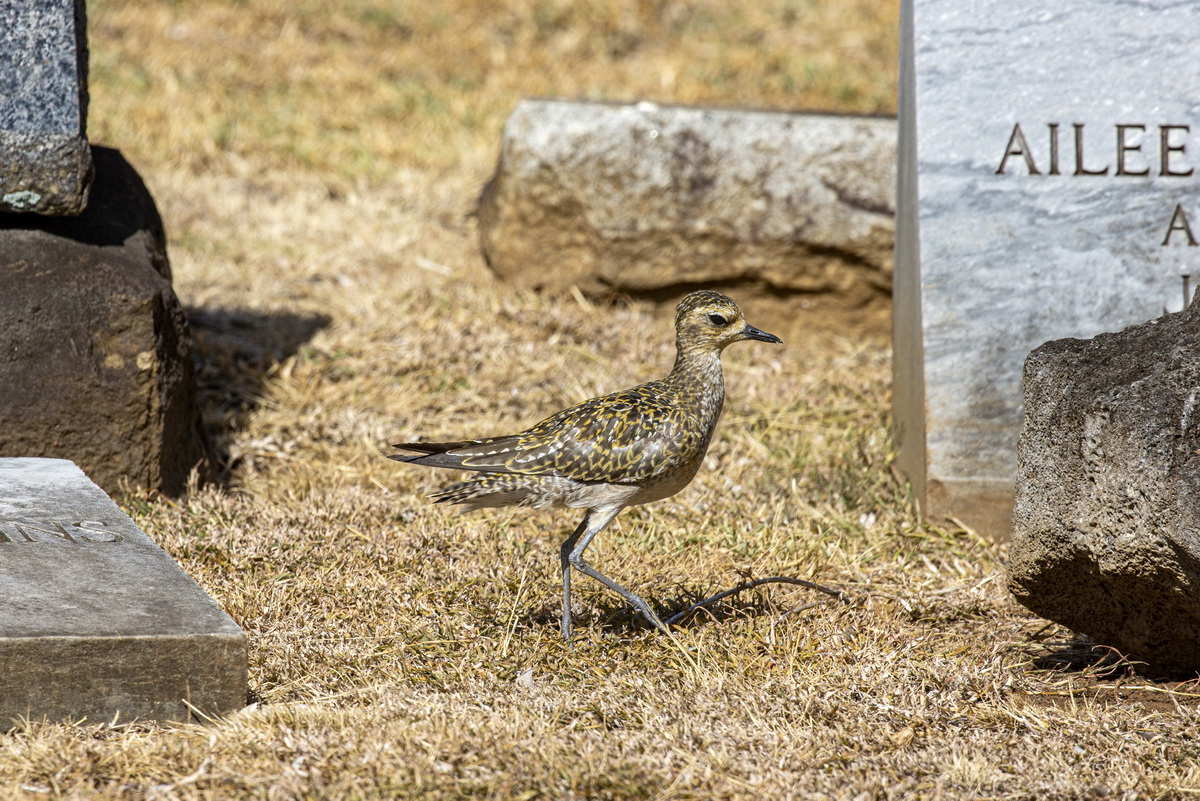
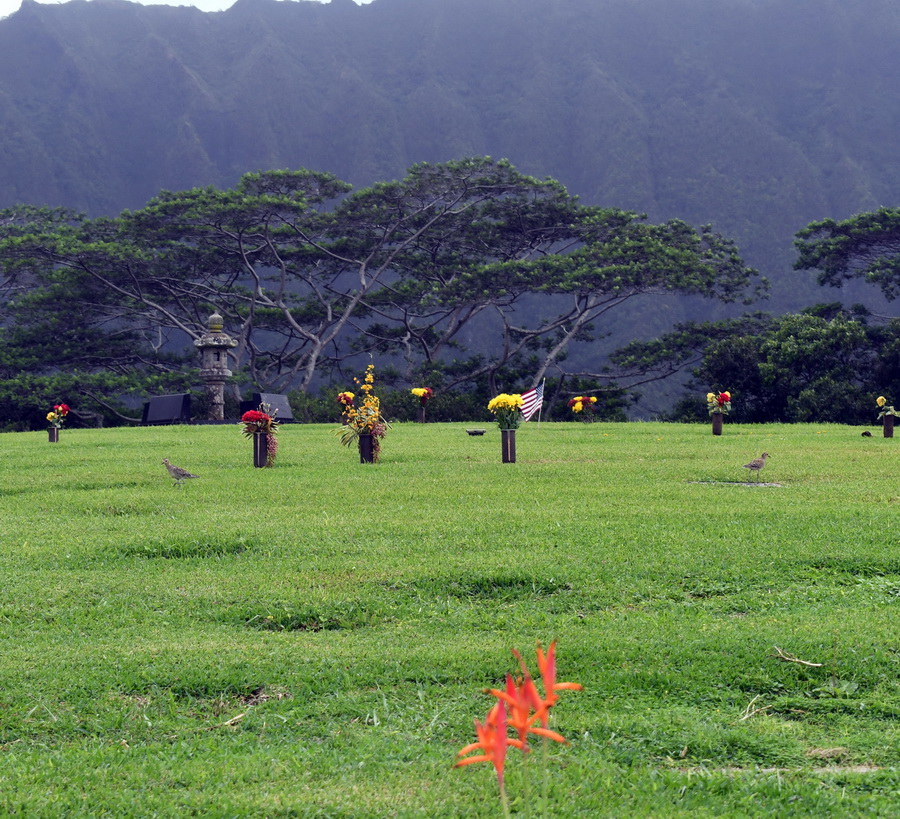 Some Kolea tolerate another individual nearby. These two forage near one another, with no fighting, at Hawaii State Veterans Cemetery, Windward Oahu. ©Susan Scott
Some Kolea tolerate another individual nearby. These two forage near one another, with no fighting, at Hawaii State Veterans Cemetery, Windward Oahu. ©Susan Scott 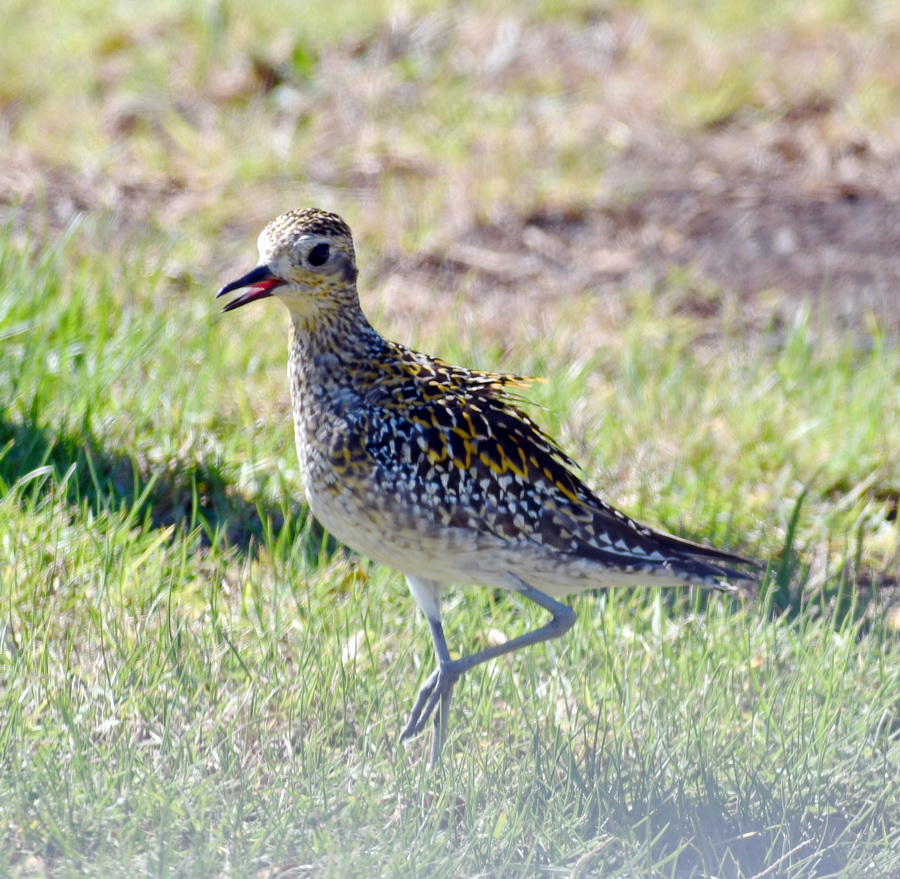 This bird, unperturbed by vehicles or people, forages in the parking lot of the Ala Wai Golf Course. ©Susan Scott
This bird, unperturbed by vehicles or people, forages in the parking lot of the Ala Wai Golf Course. ©Susan Scott 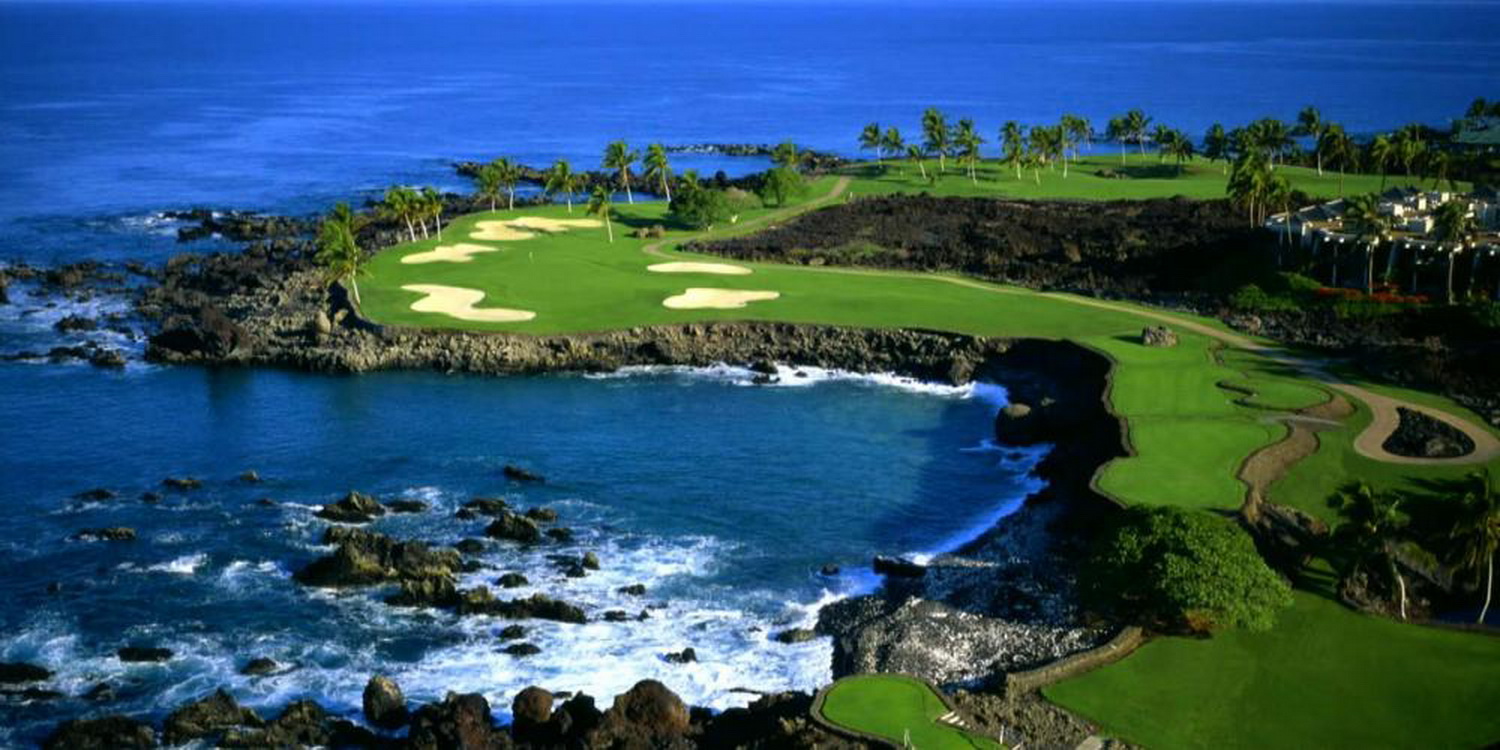
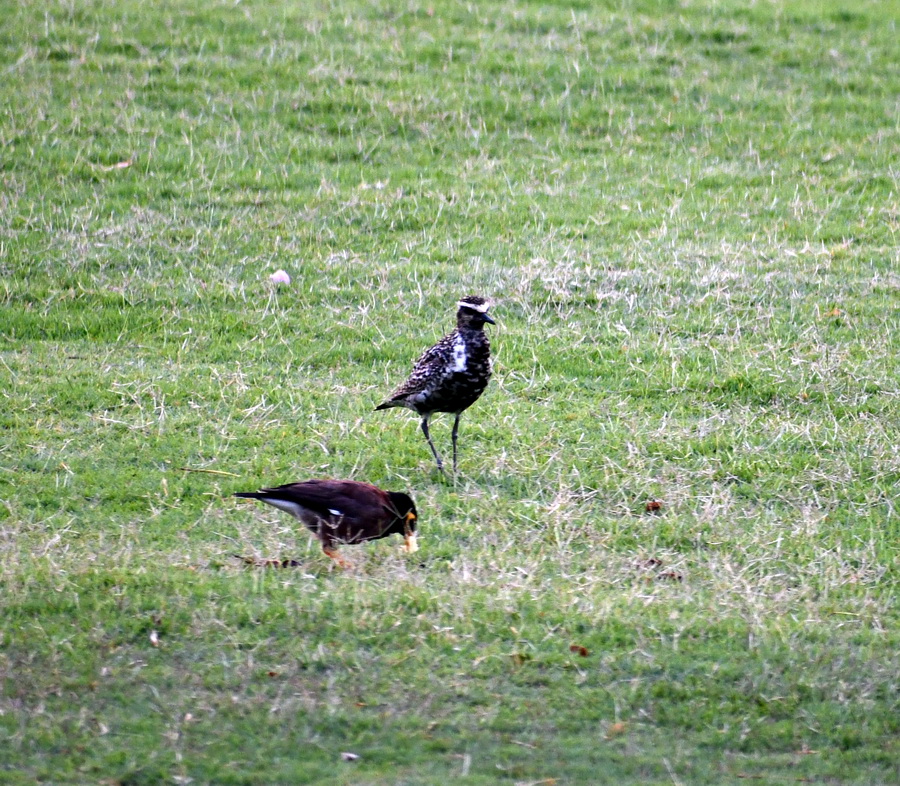
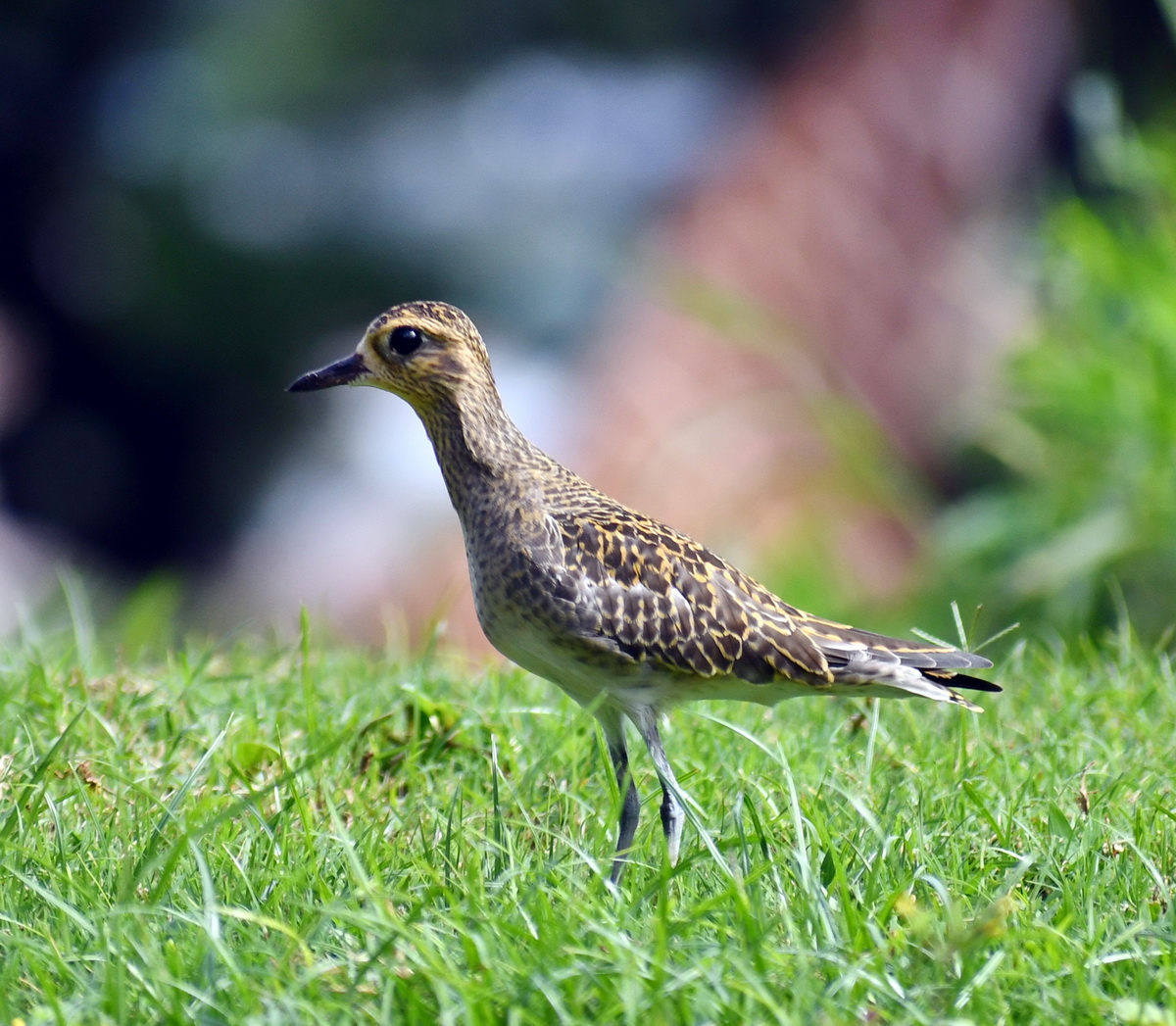 Typical winter colors of Kolea. ©Susan Scott
Typical winter colors of Kolea. ©Susan Scott  Mauna Kea Golf Course, Big Island.
Mauna Kea Golf Course, Big Island. 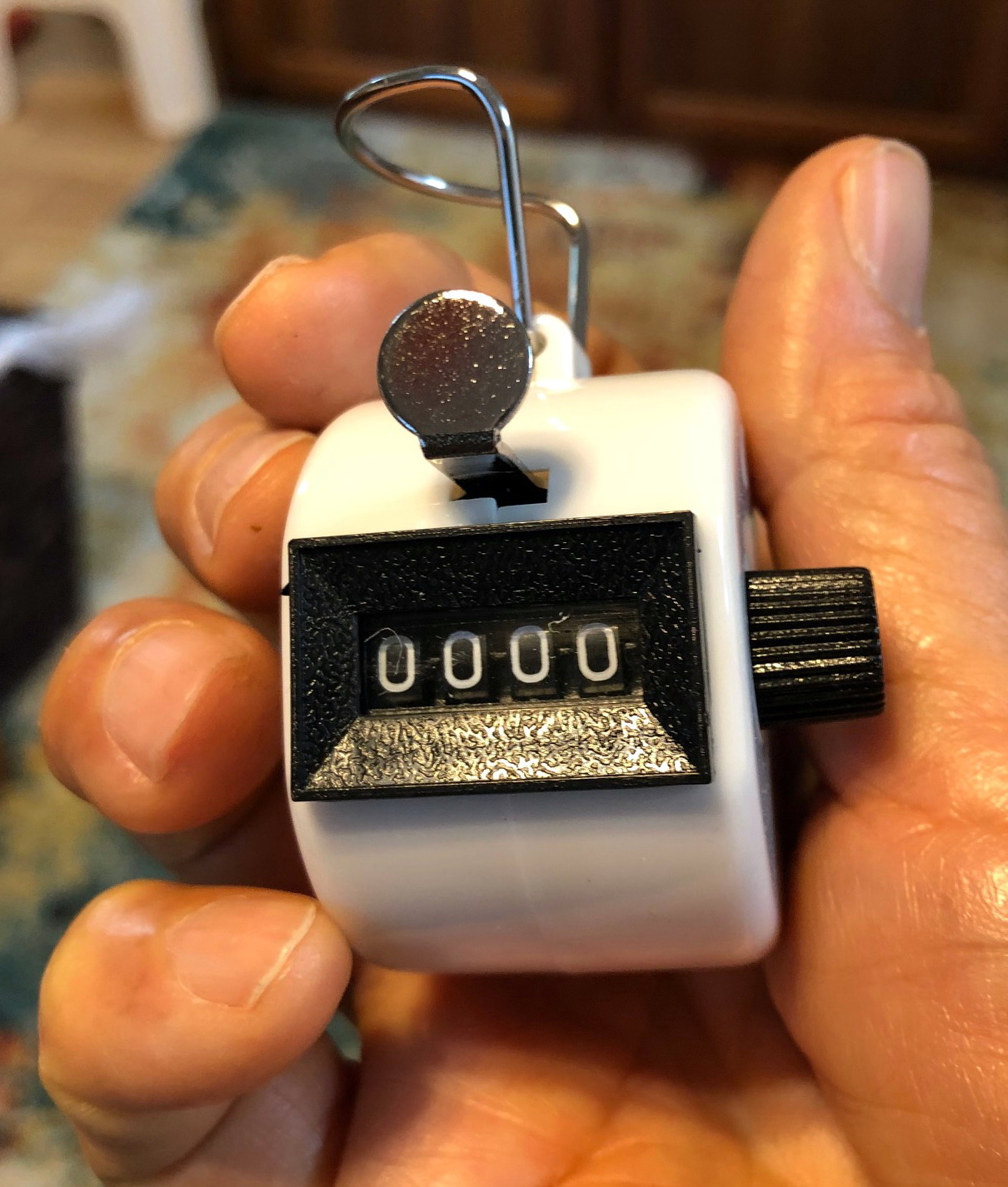
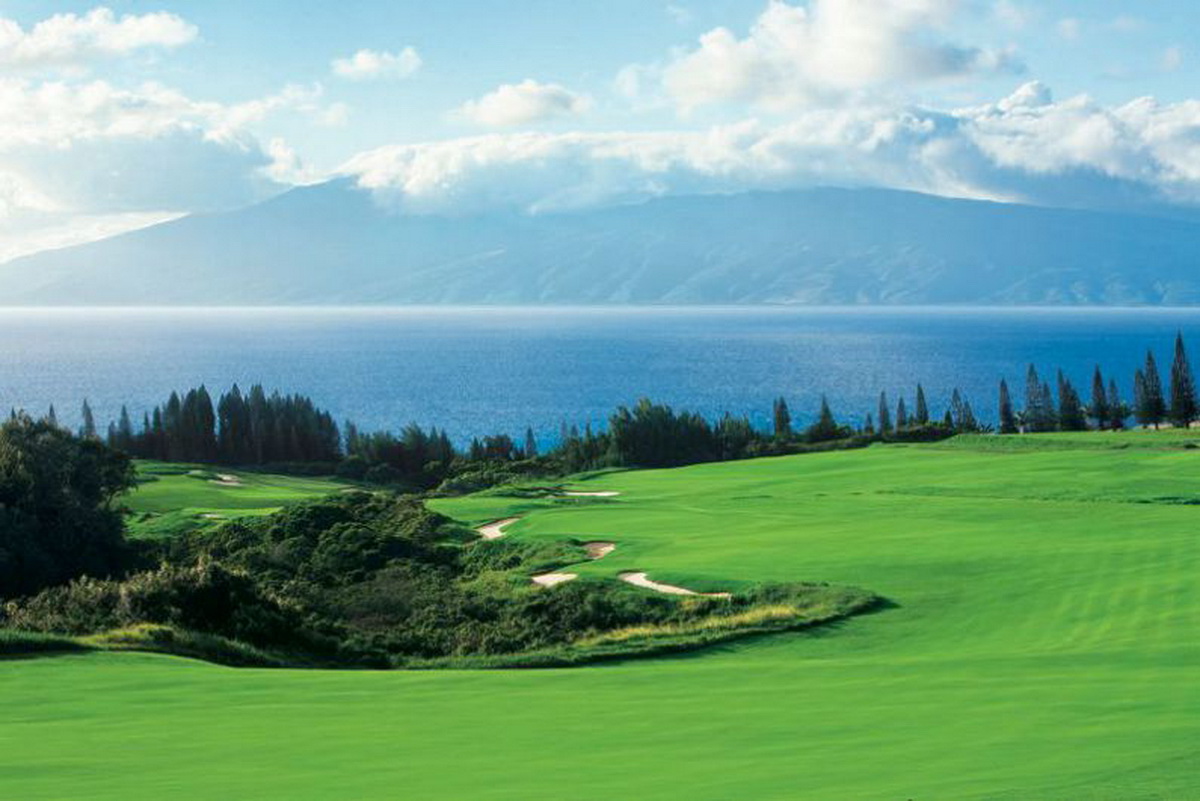 Kapalua Resort, Lahaina, Maui …
Kapalua Resort, Lahaina, Maui …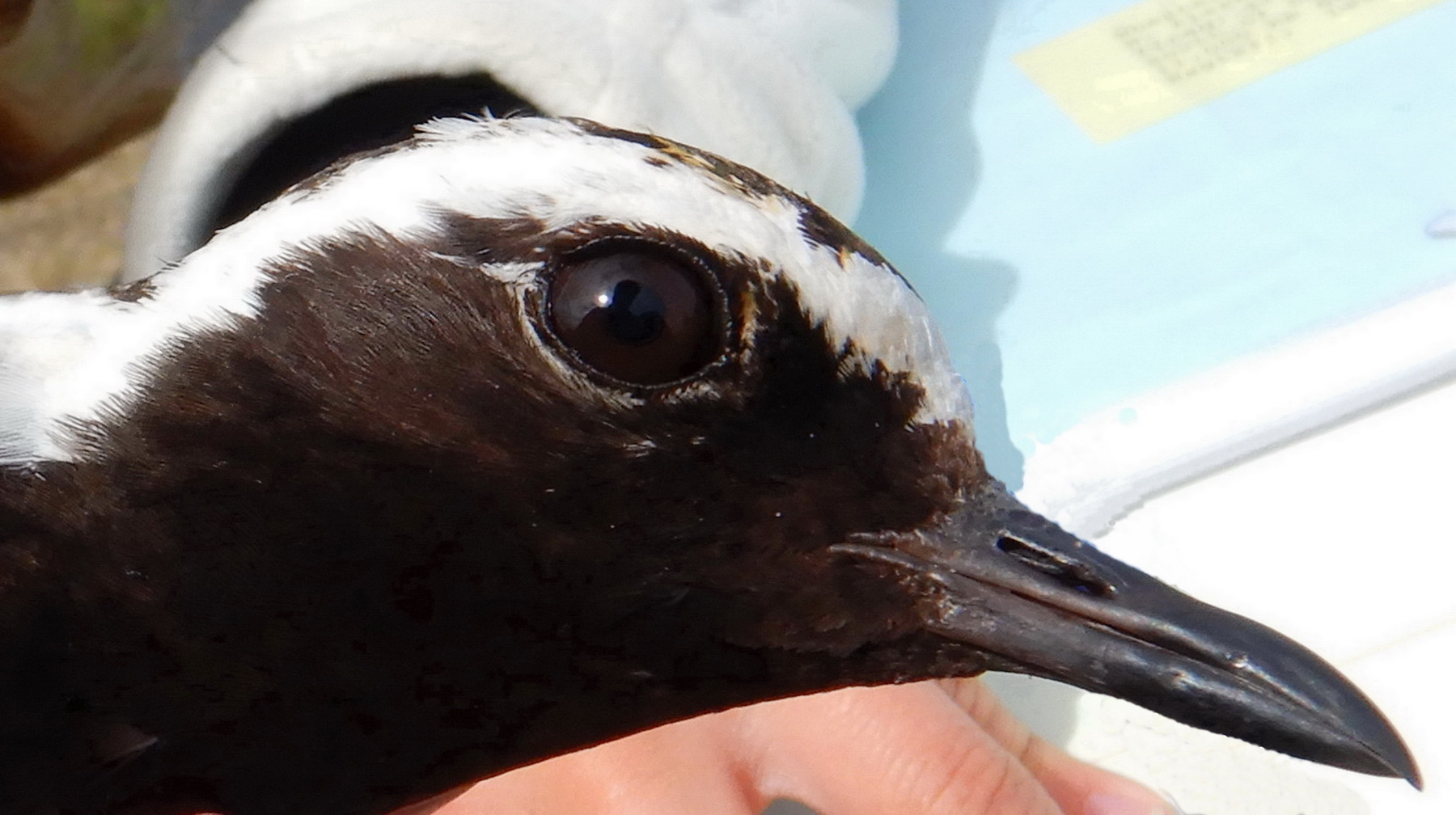
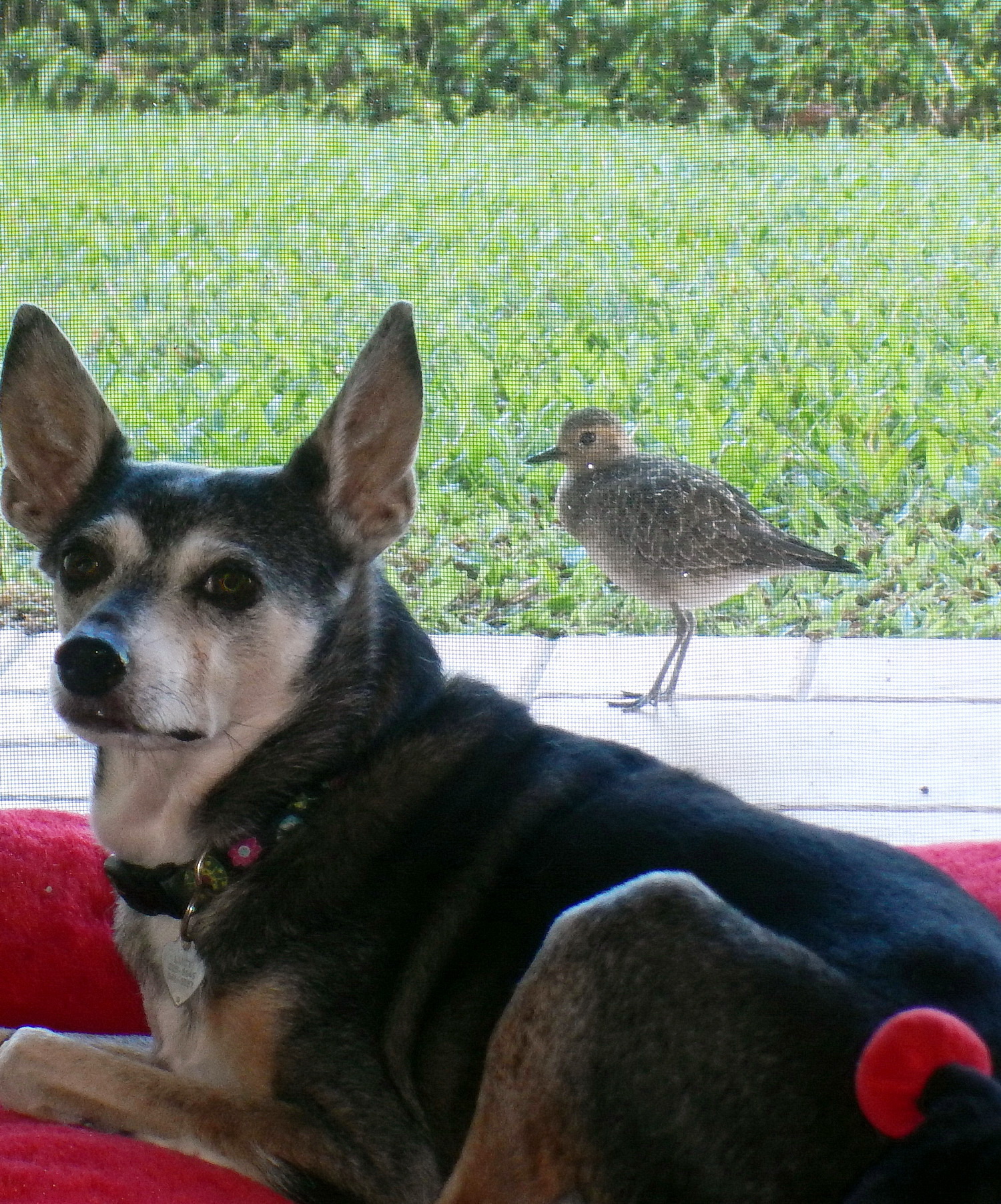 This Kolea, named Gracie, learned that the family dog, Lucy, was no threat. A screen separates the dog and the bird. ©Susan Scott
This Kolea, named Gracie, learned that the family dog, Lucy, was no threat. A screen separates the dog and the bird. ©Susan Scott 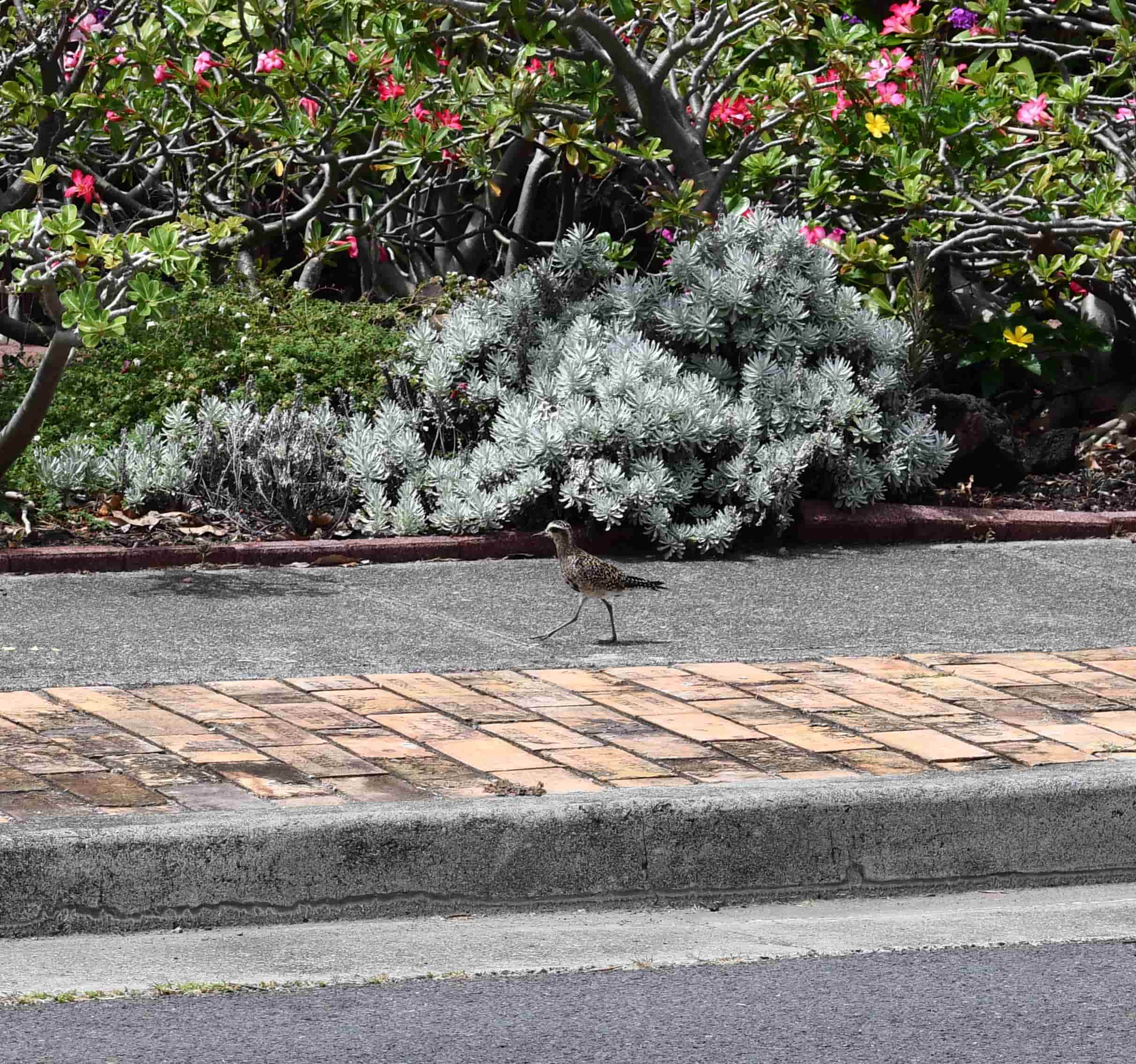
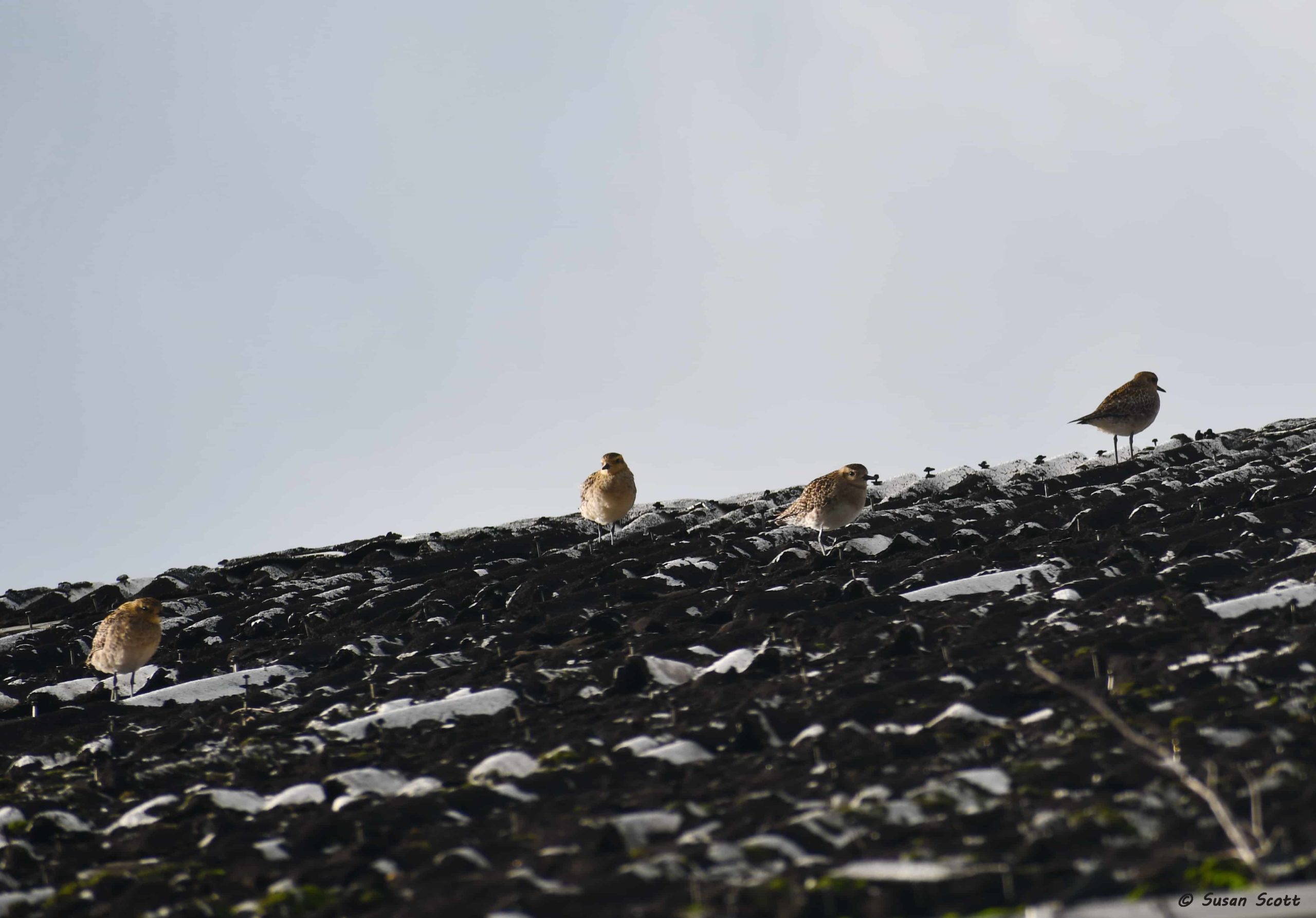 Bedtime for birdies. A dusk gathering of Kolea on a rooftop at Midway Atoll. ©Susan Scott
Bedtime for birdies. A dusk gathering of Kolea on a rooftop at Midway Atoll. ©Susan Scott 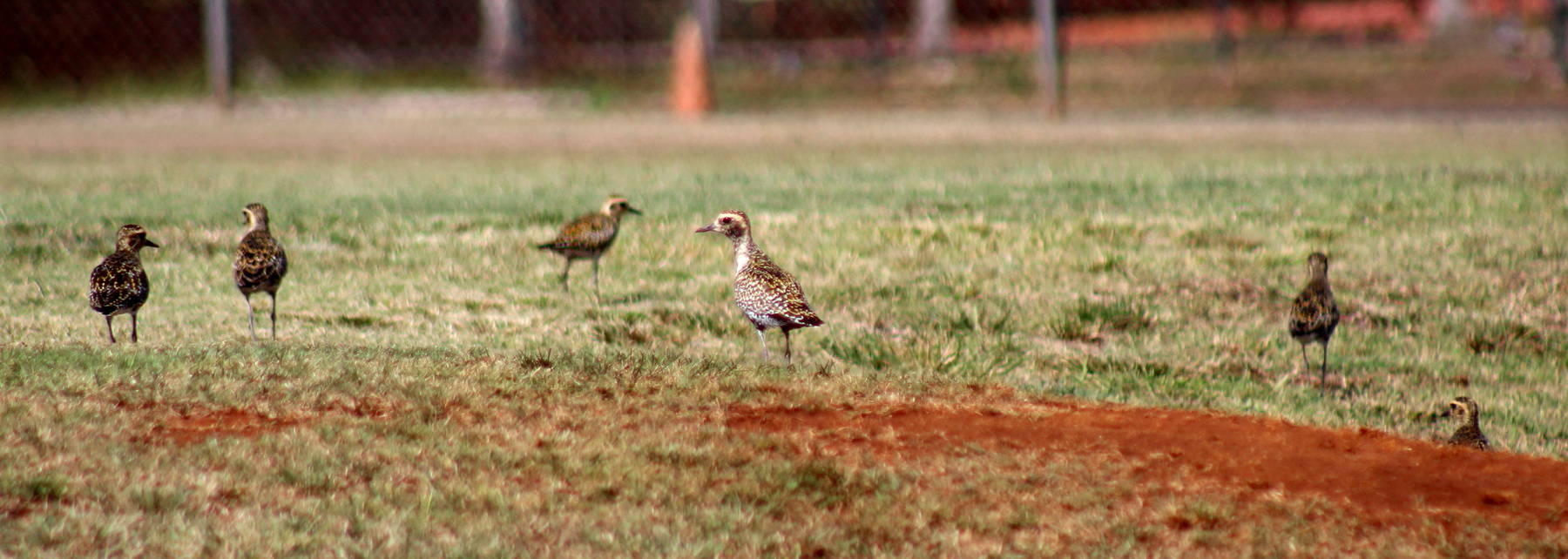
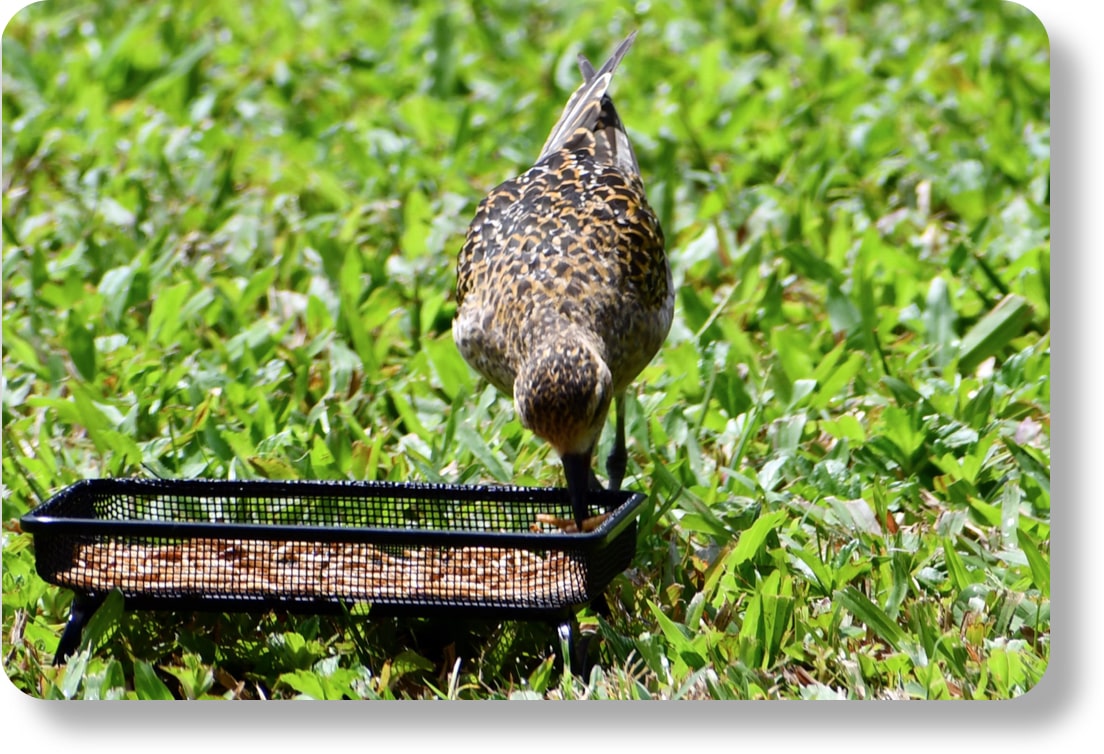 Little Count: A Kaneohe resident grows mealworms for his backyard Kolea. ©Susan Scott
Little Count: A Kaneohe resident grows mealworms for his backyard Kolea. ©Susan Scott 